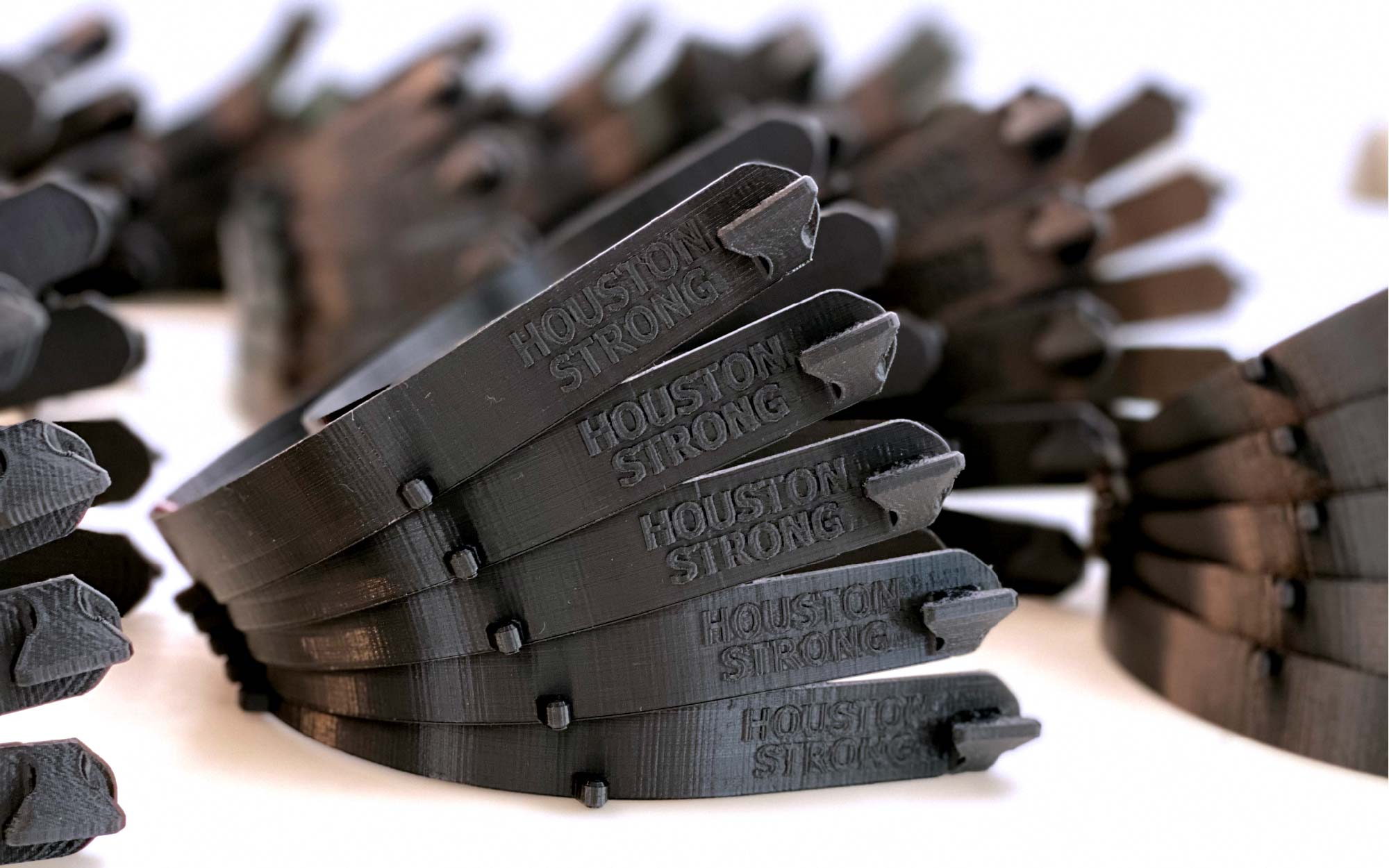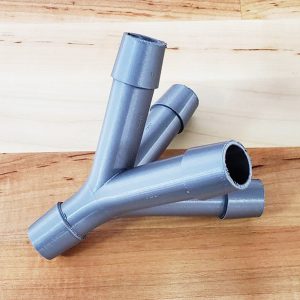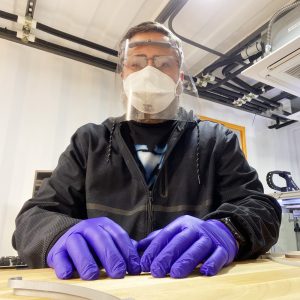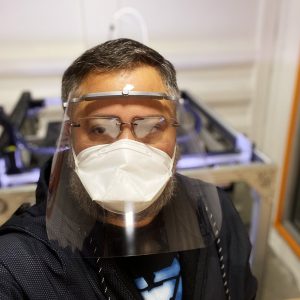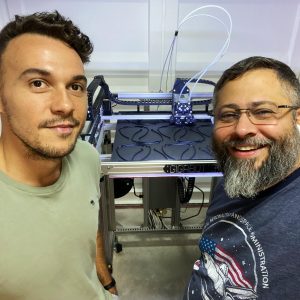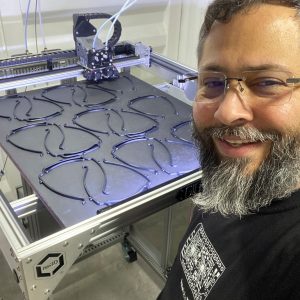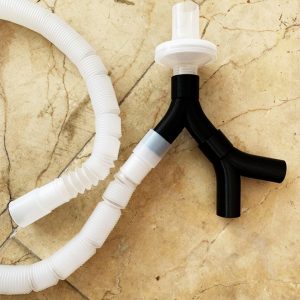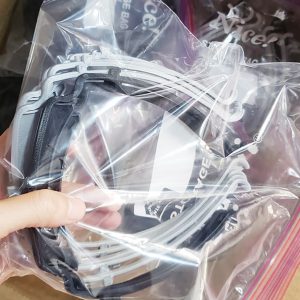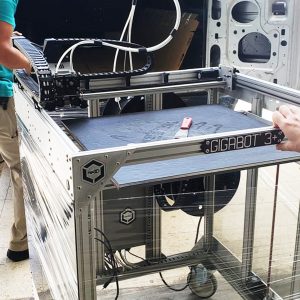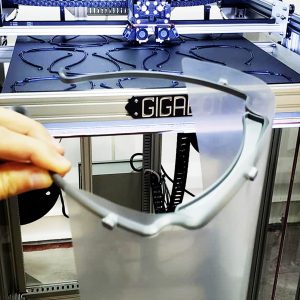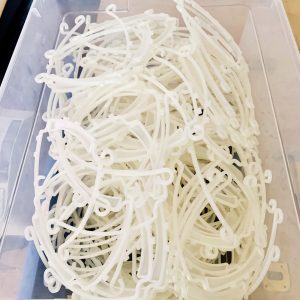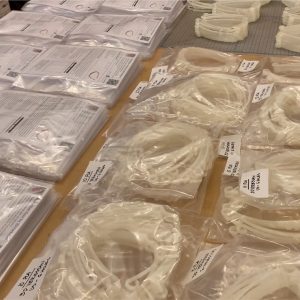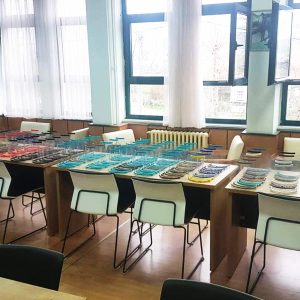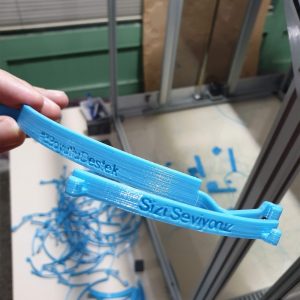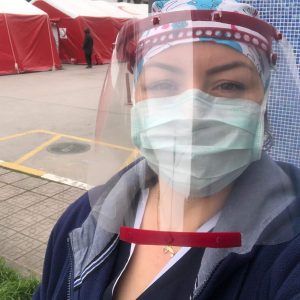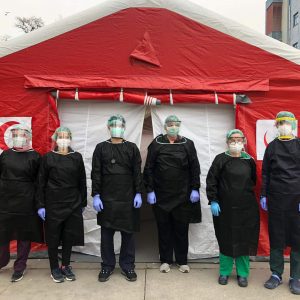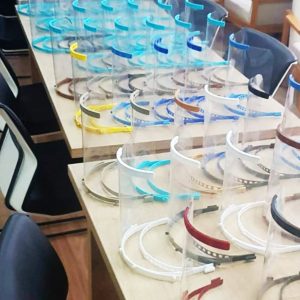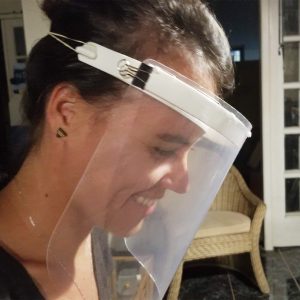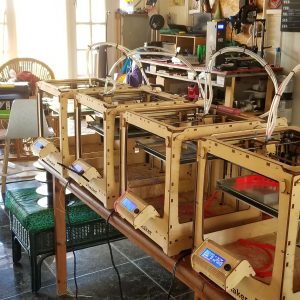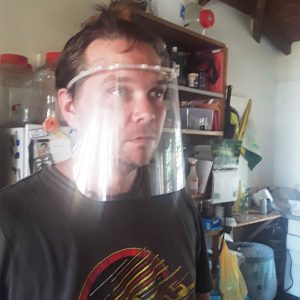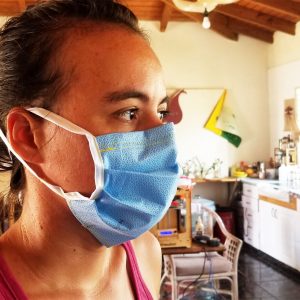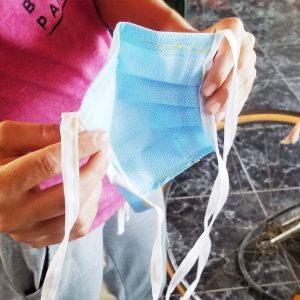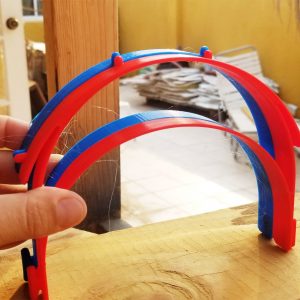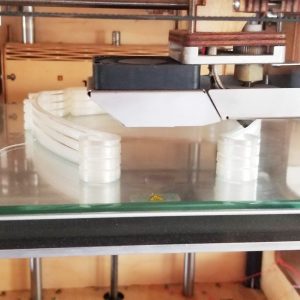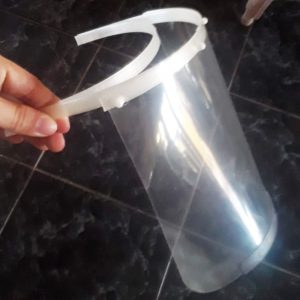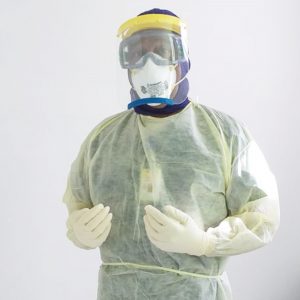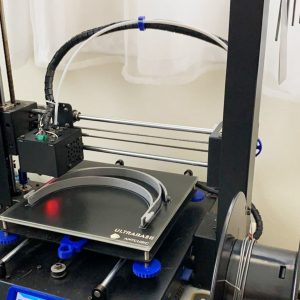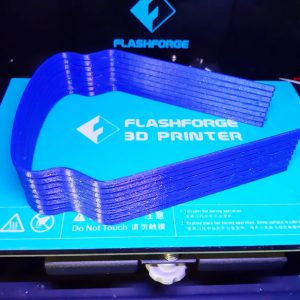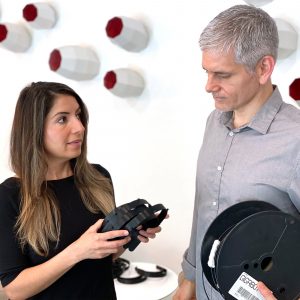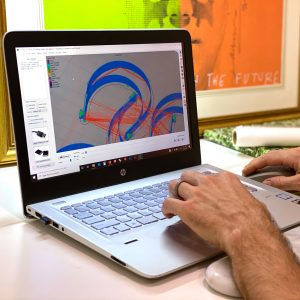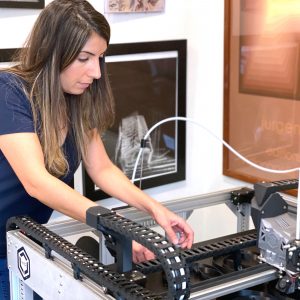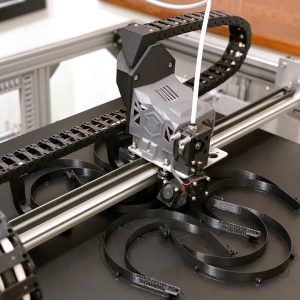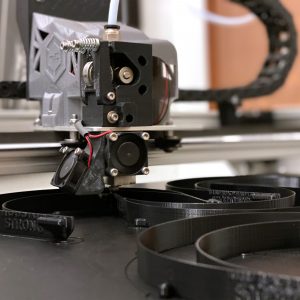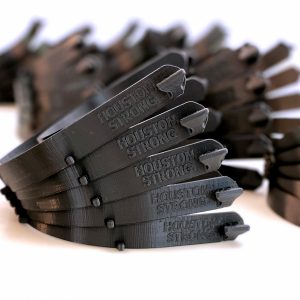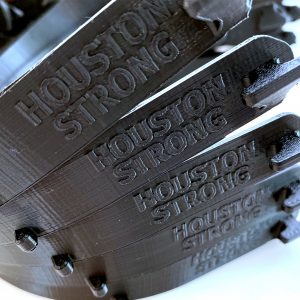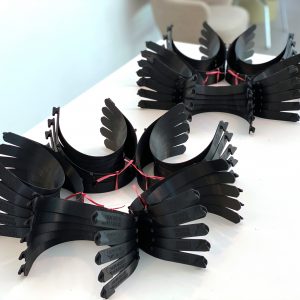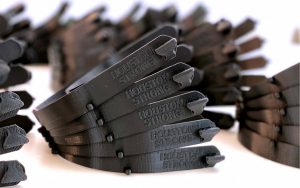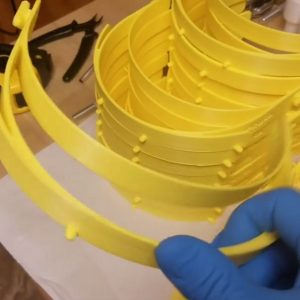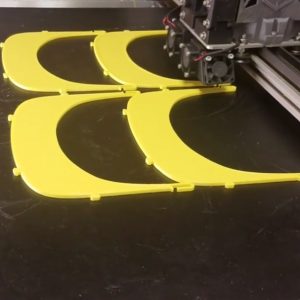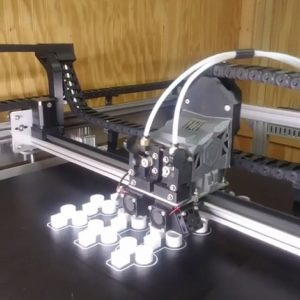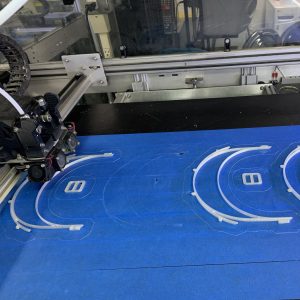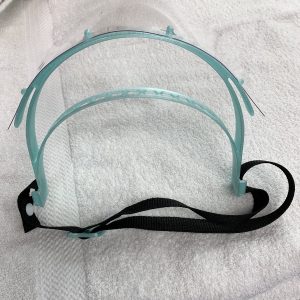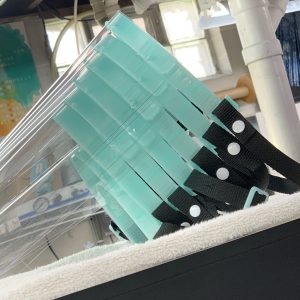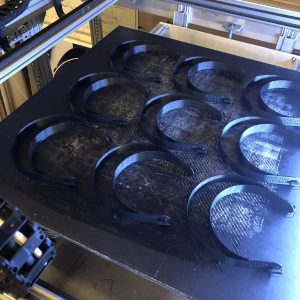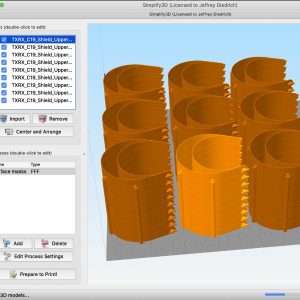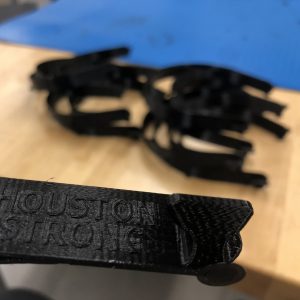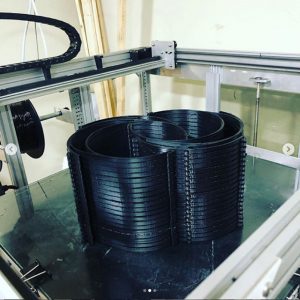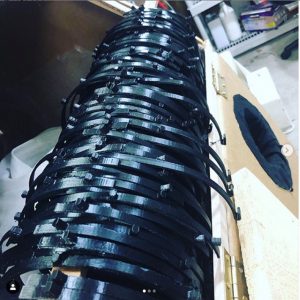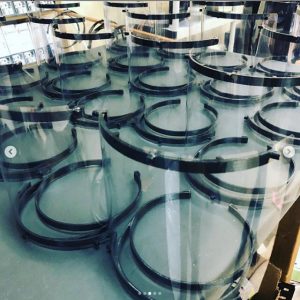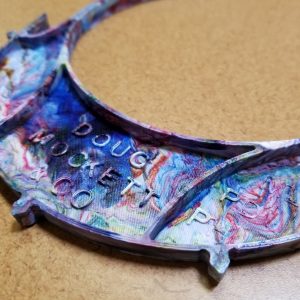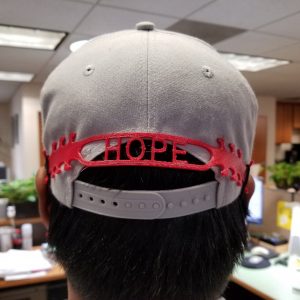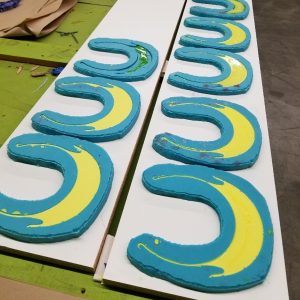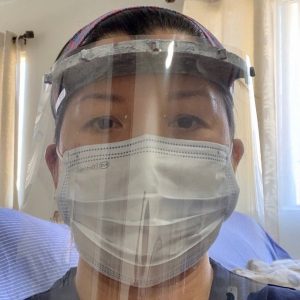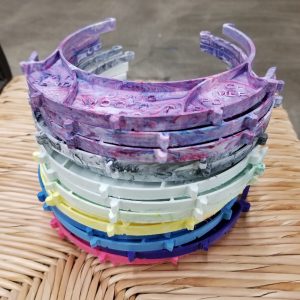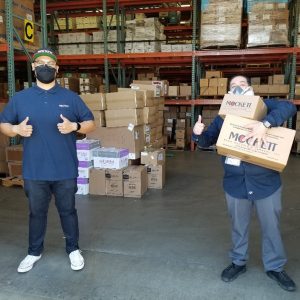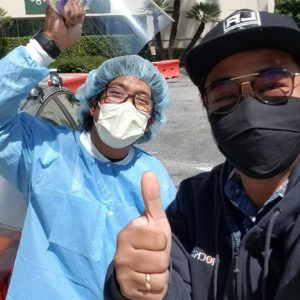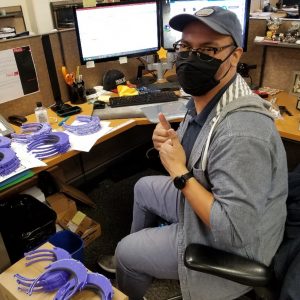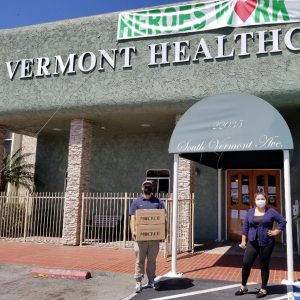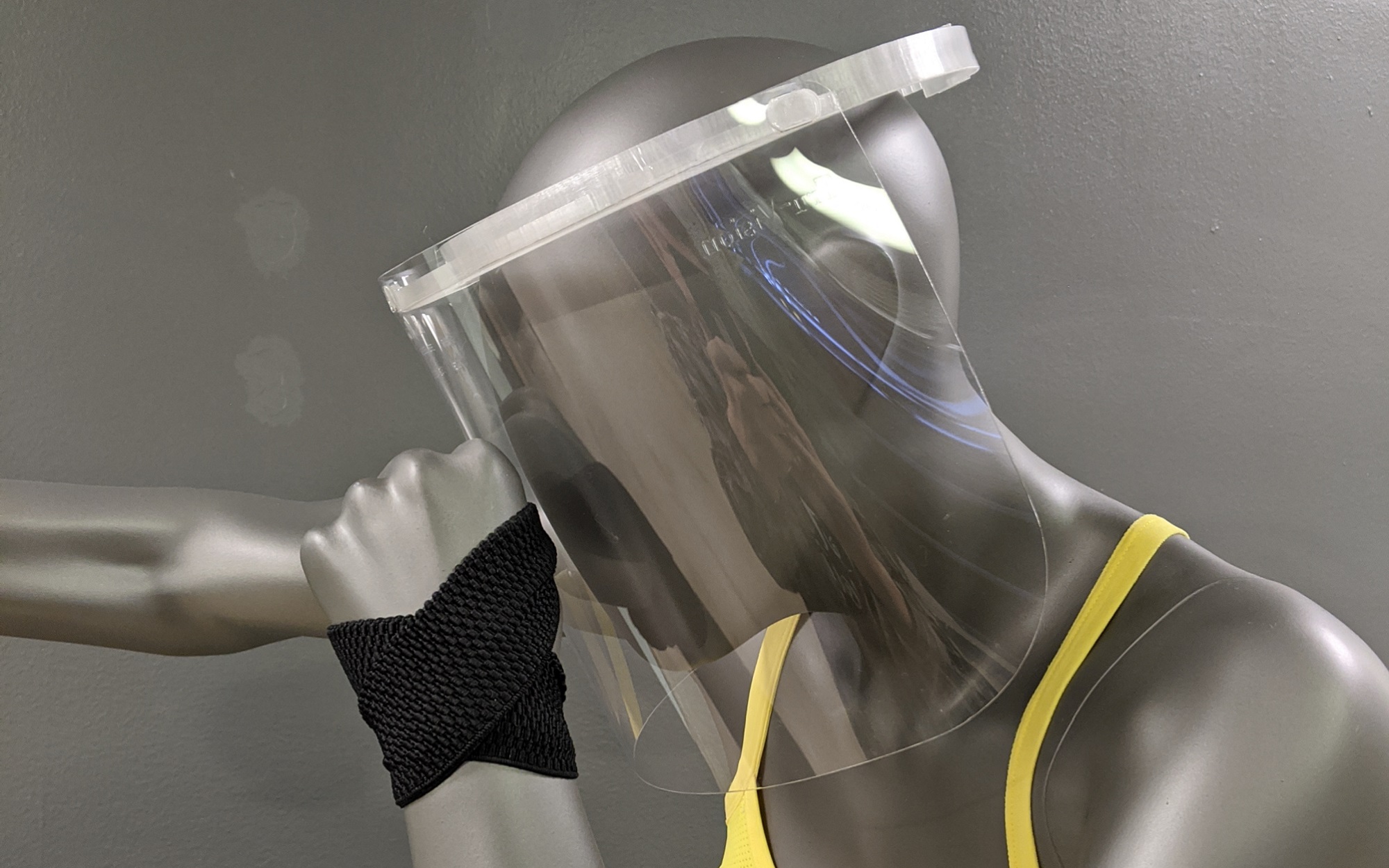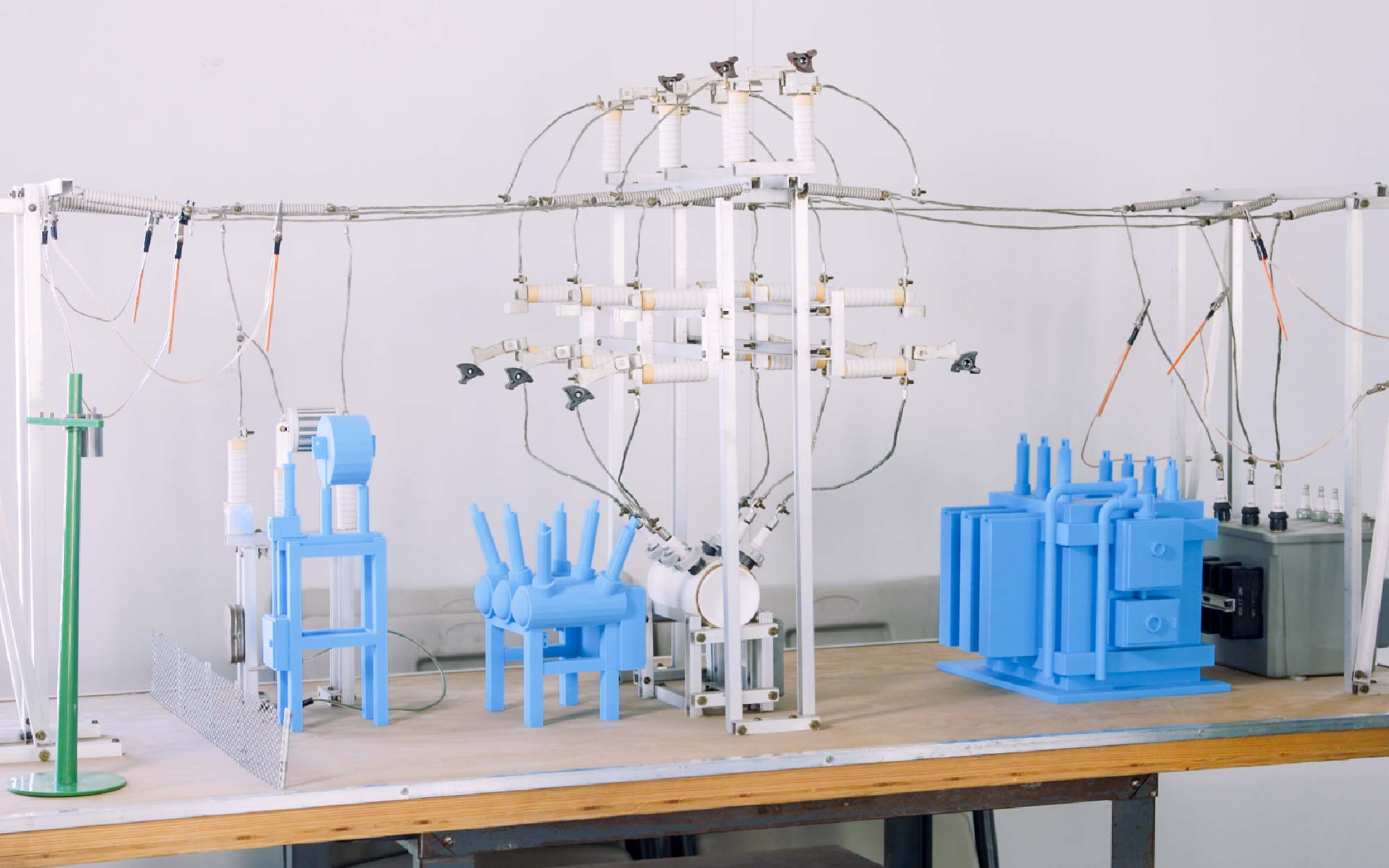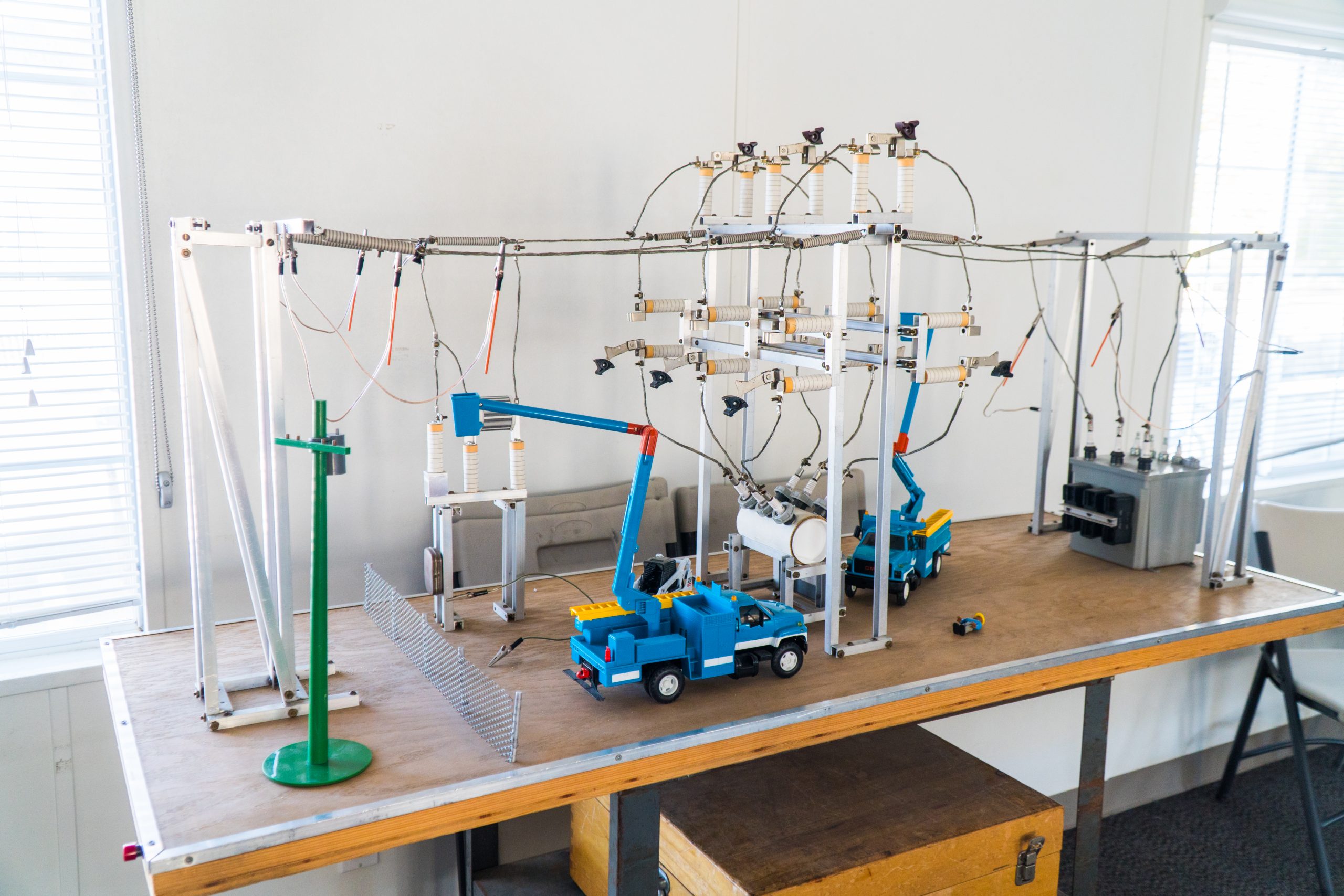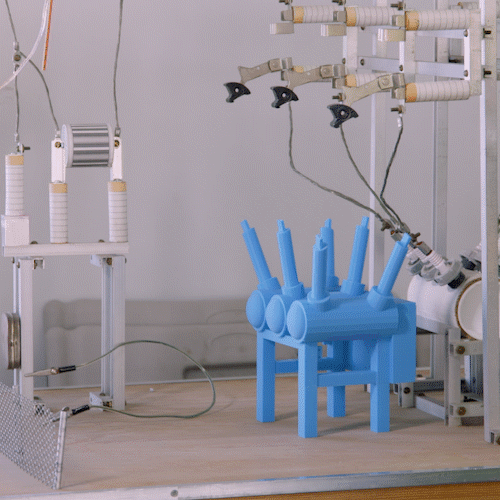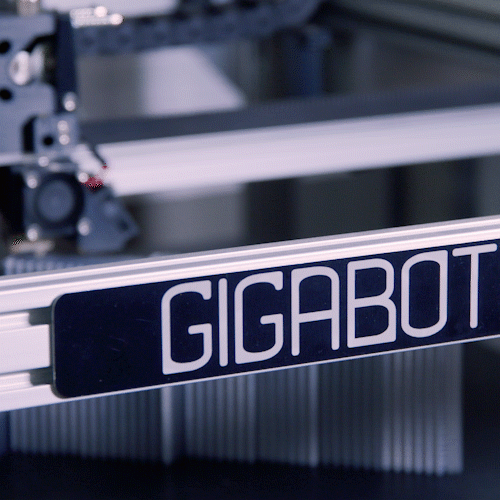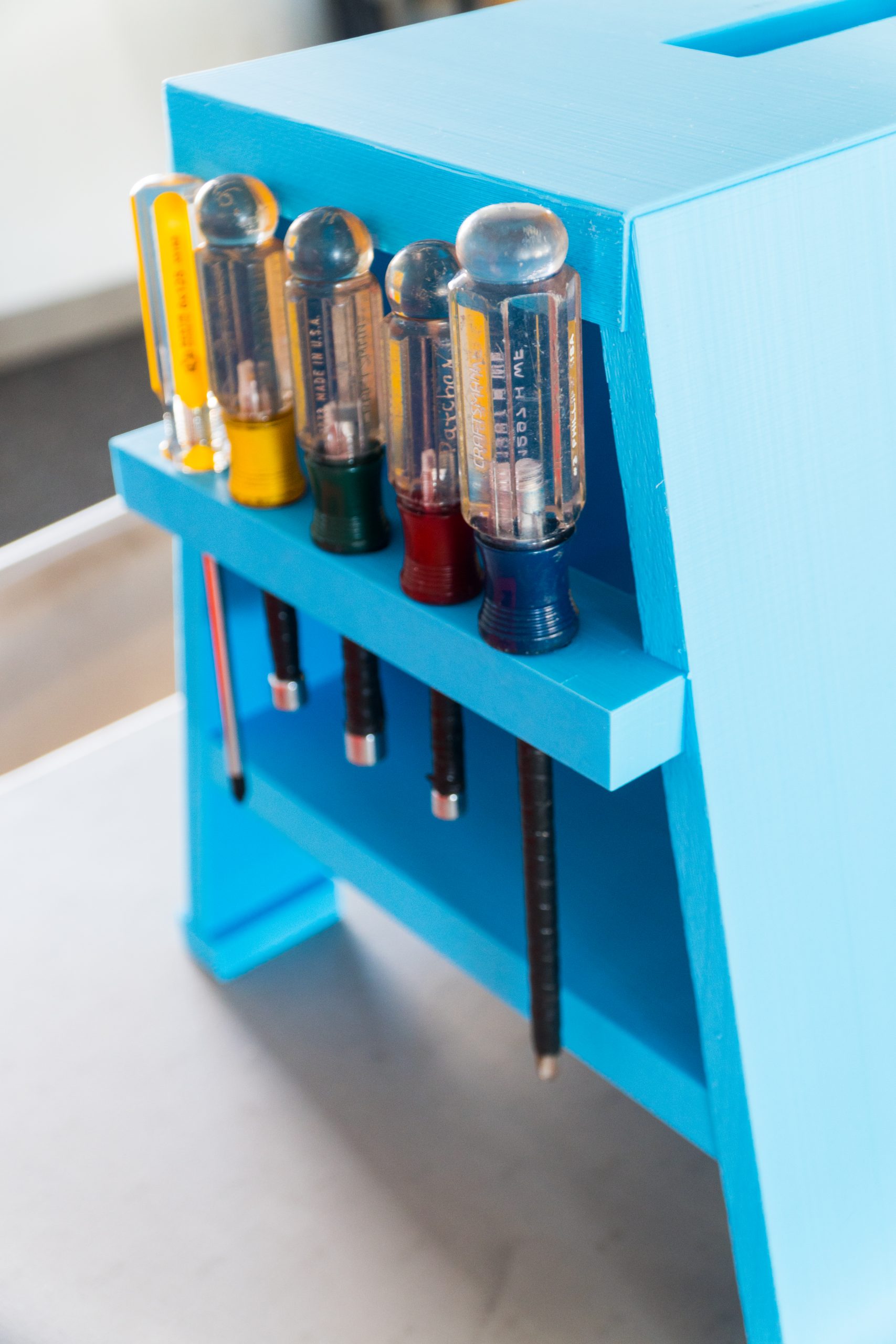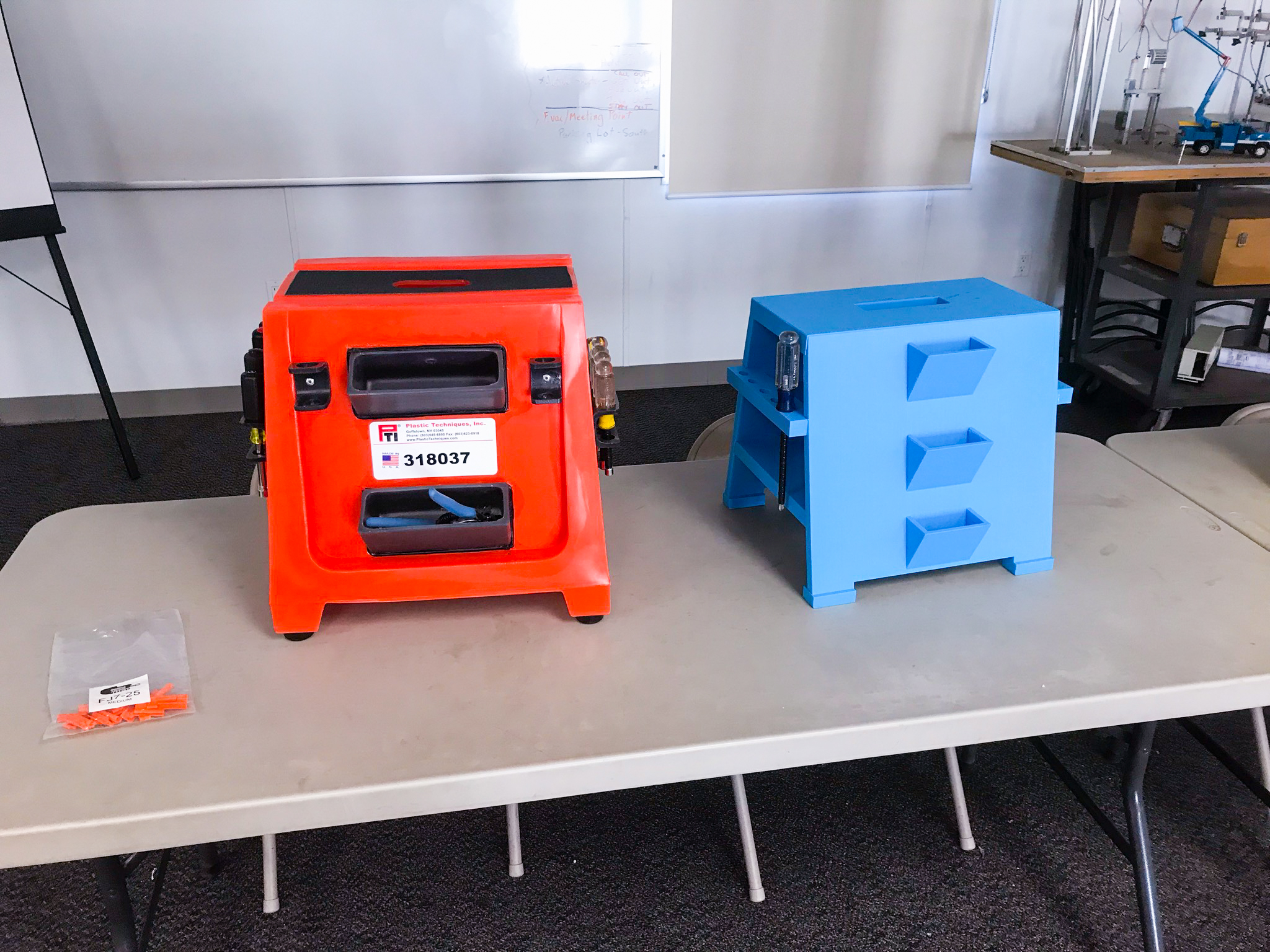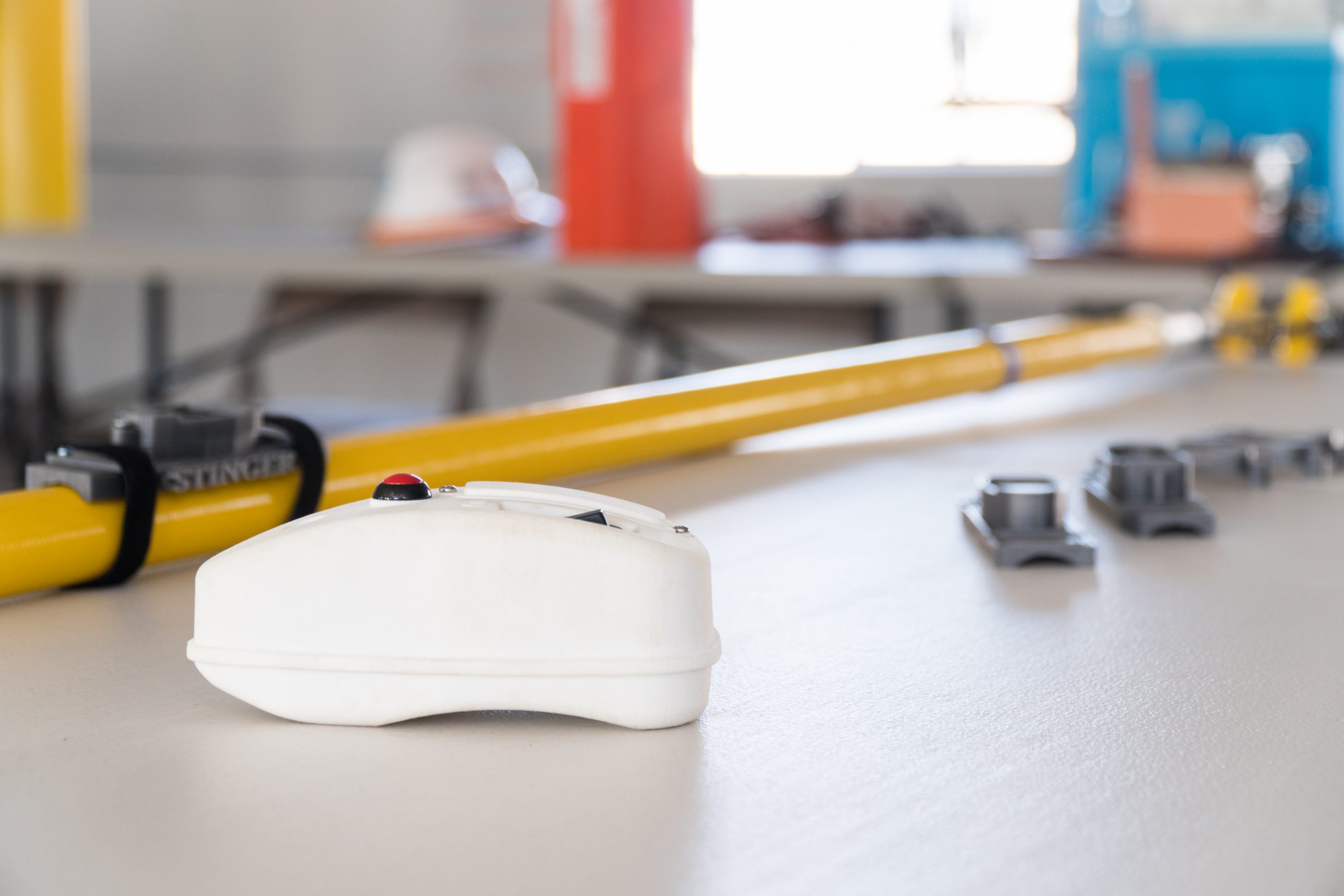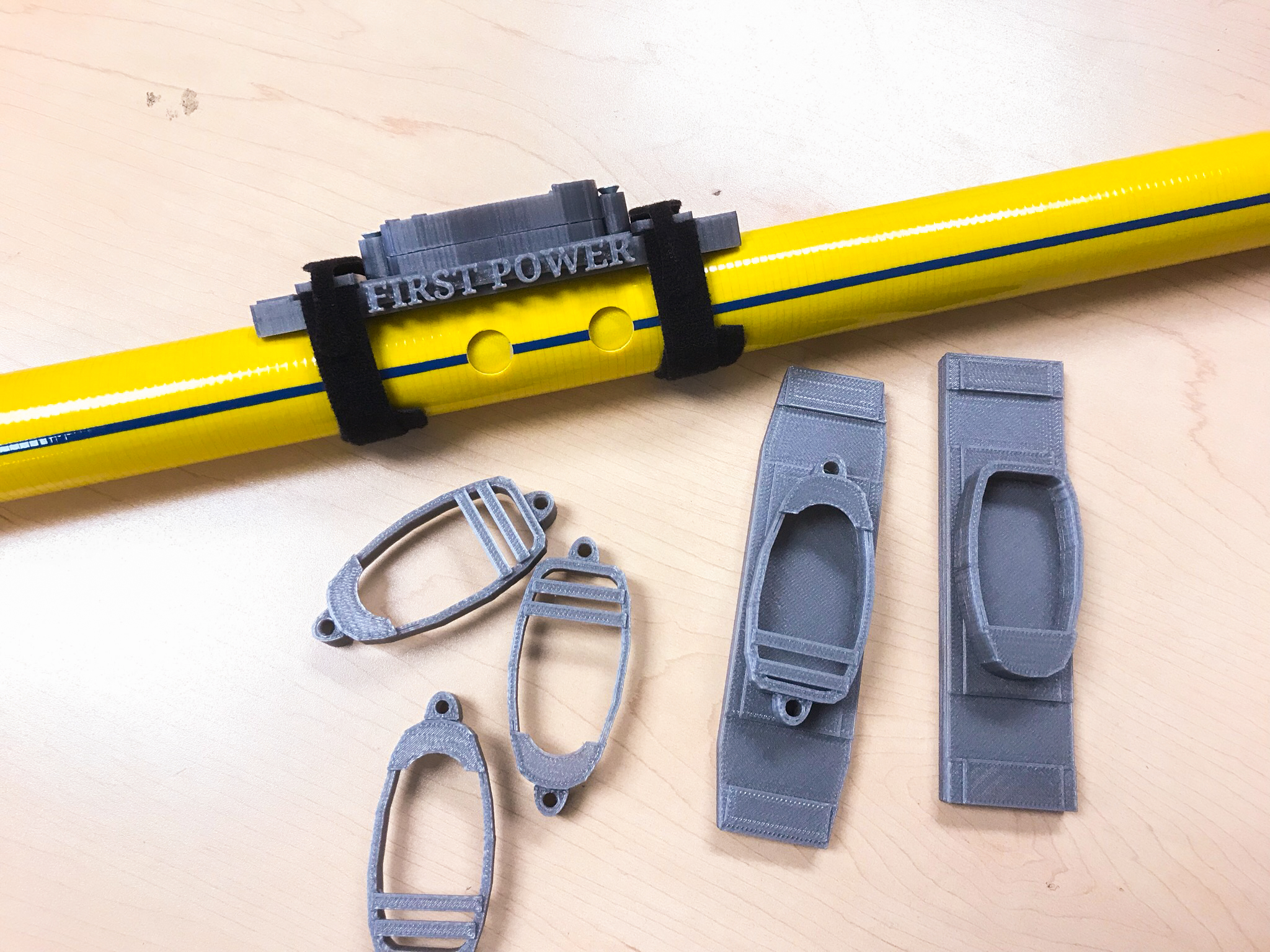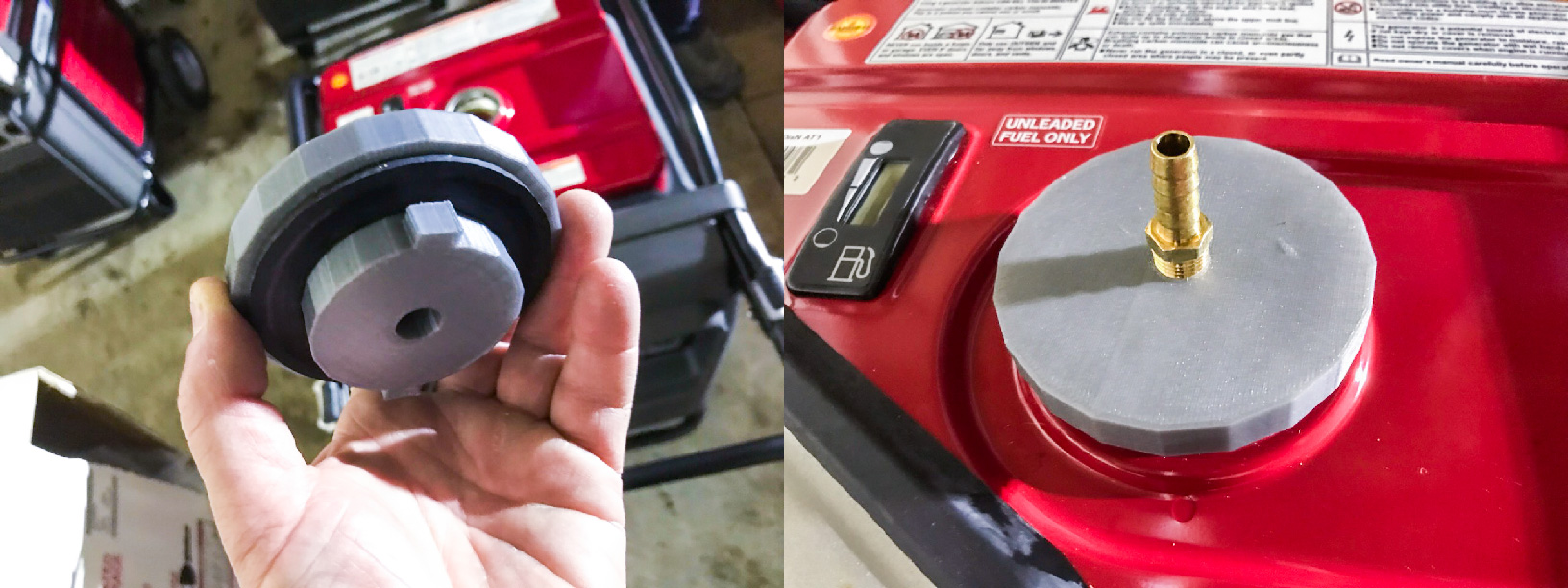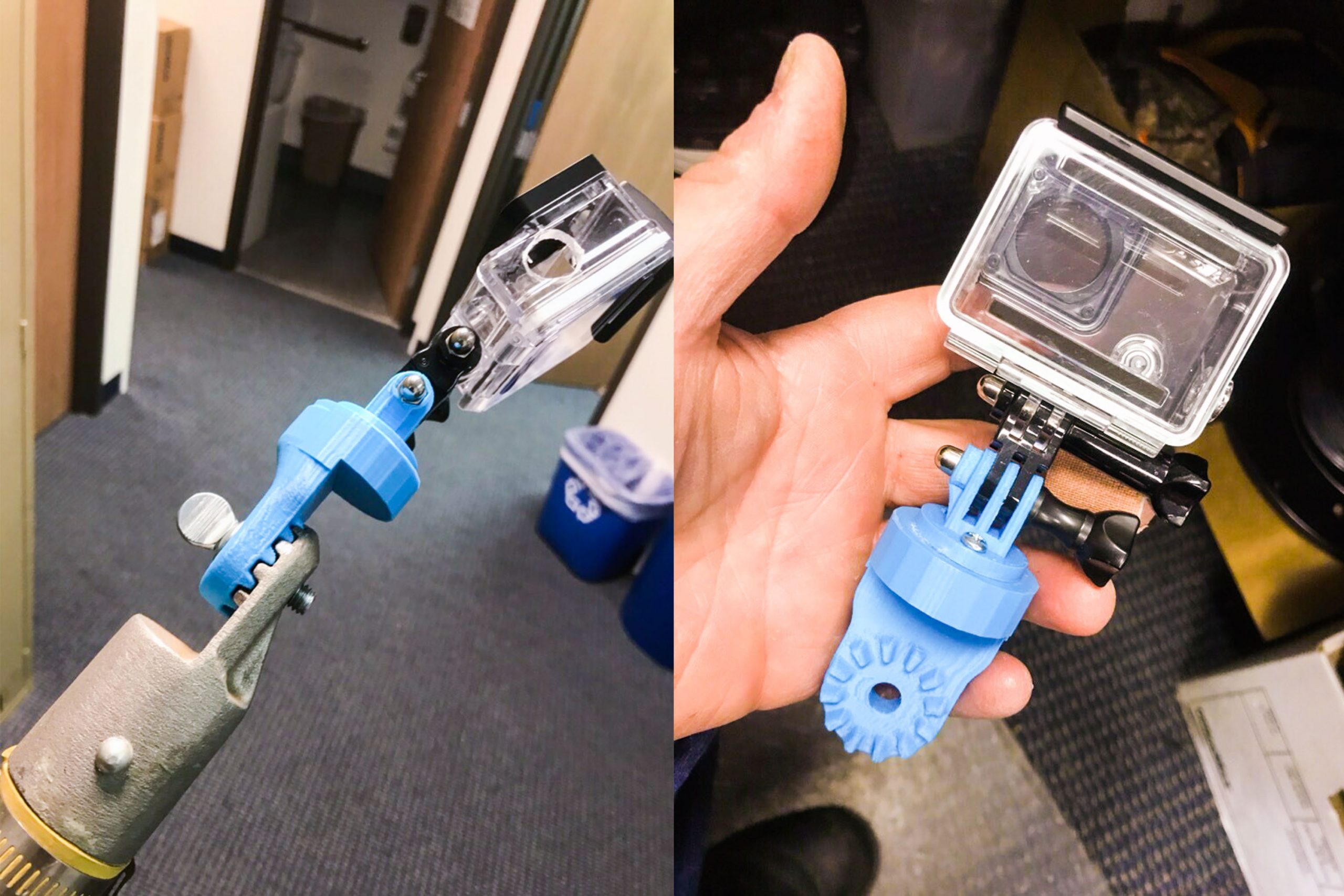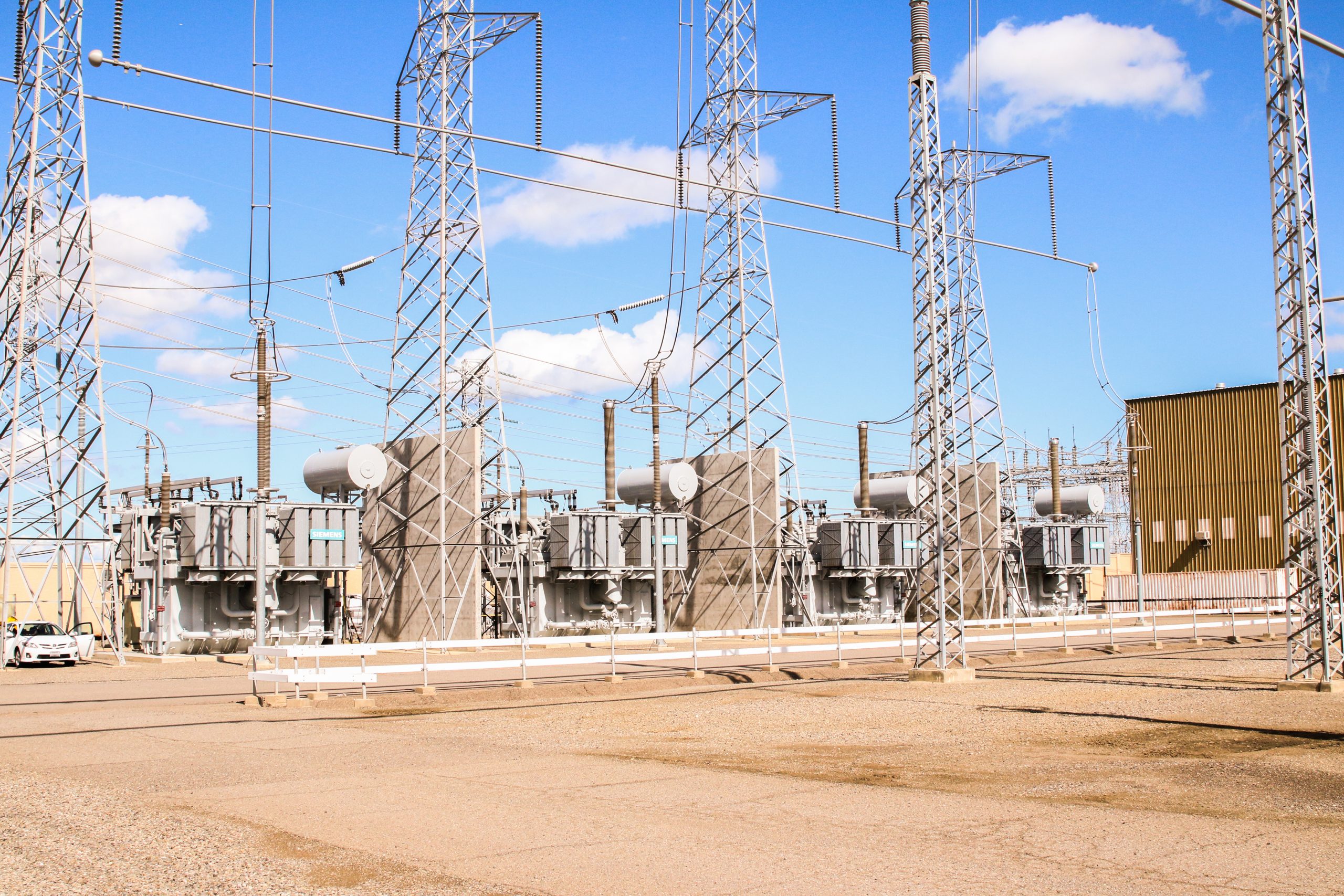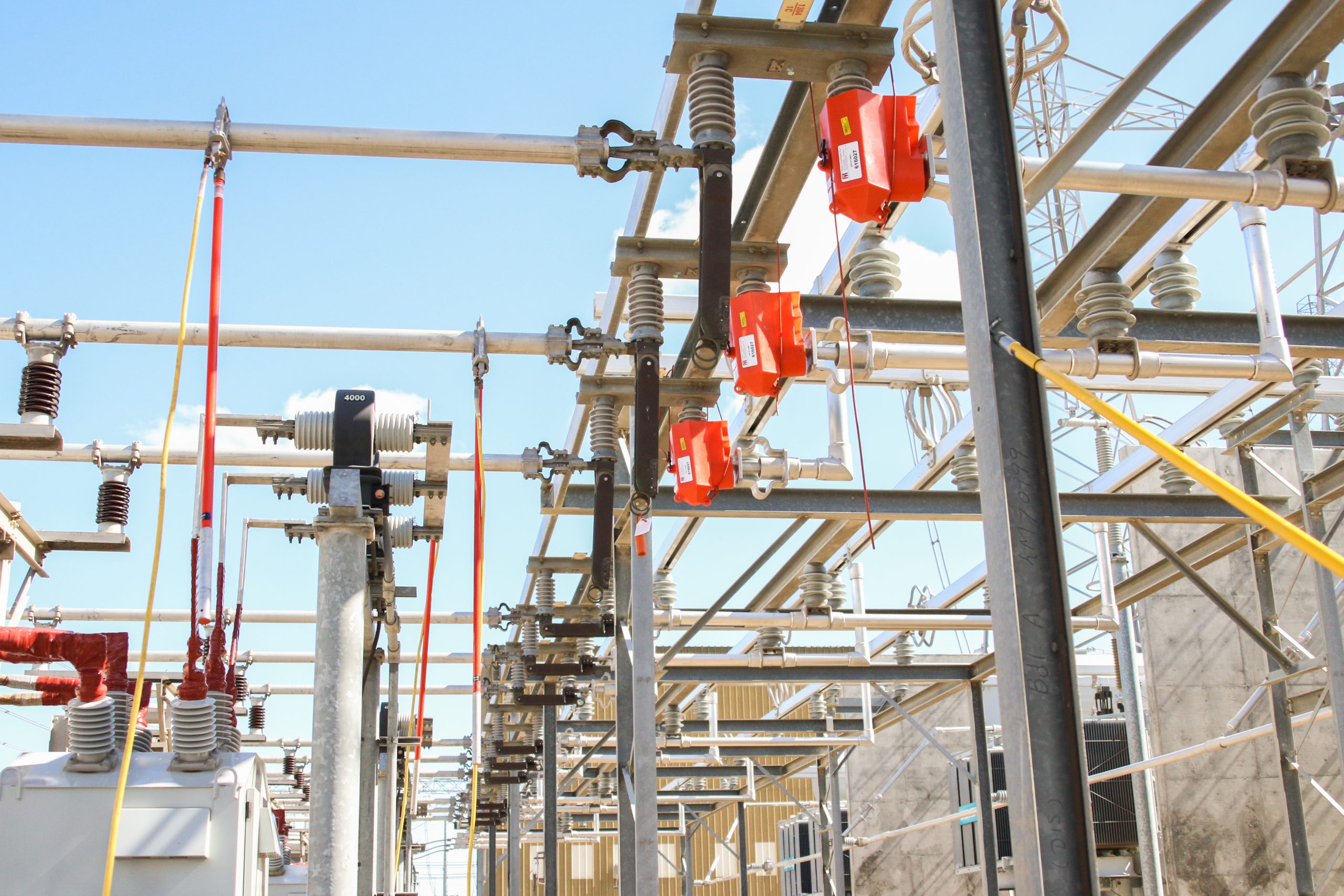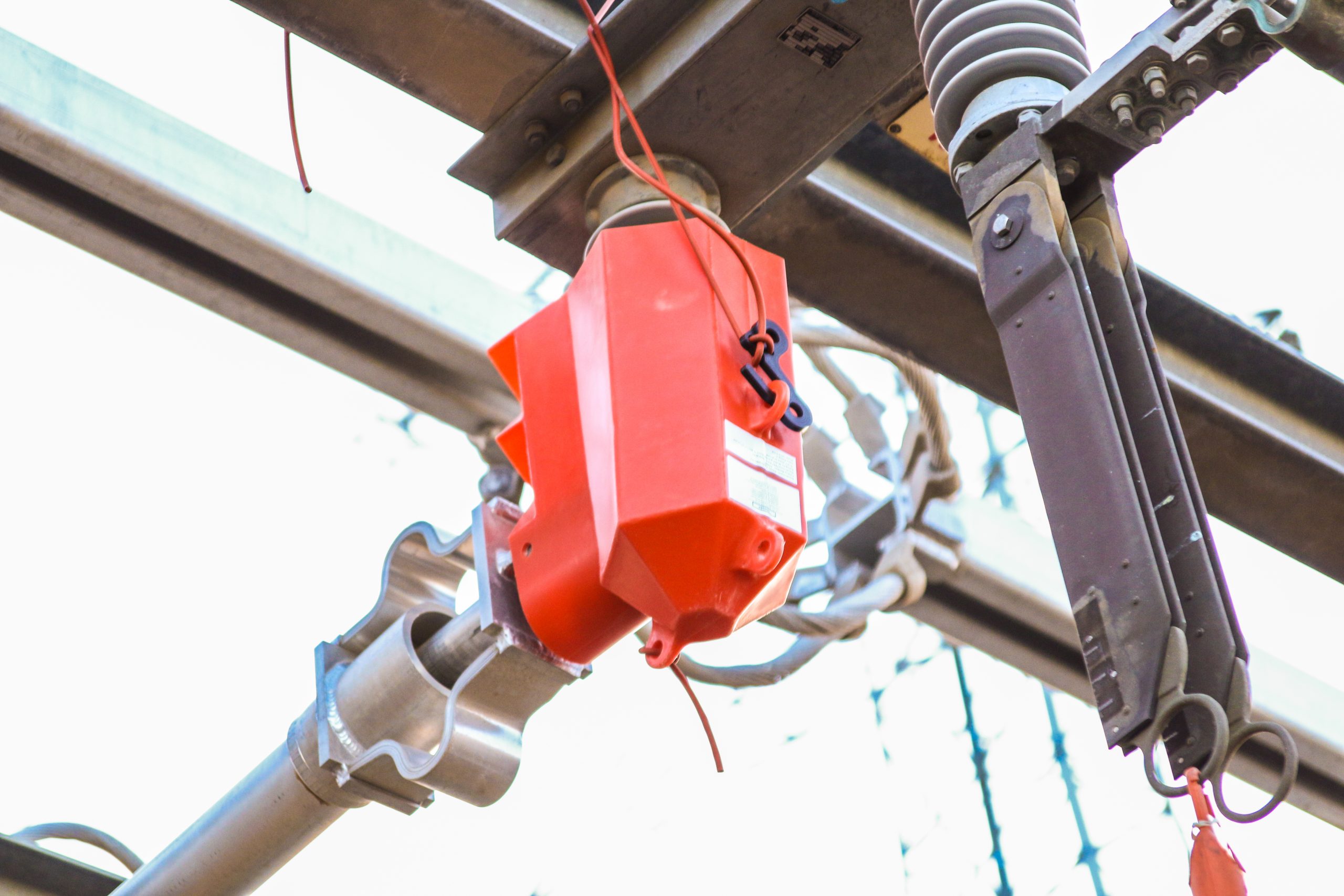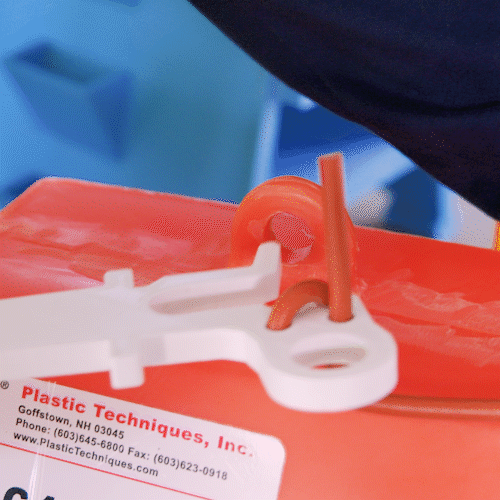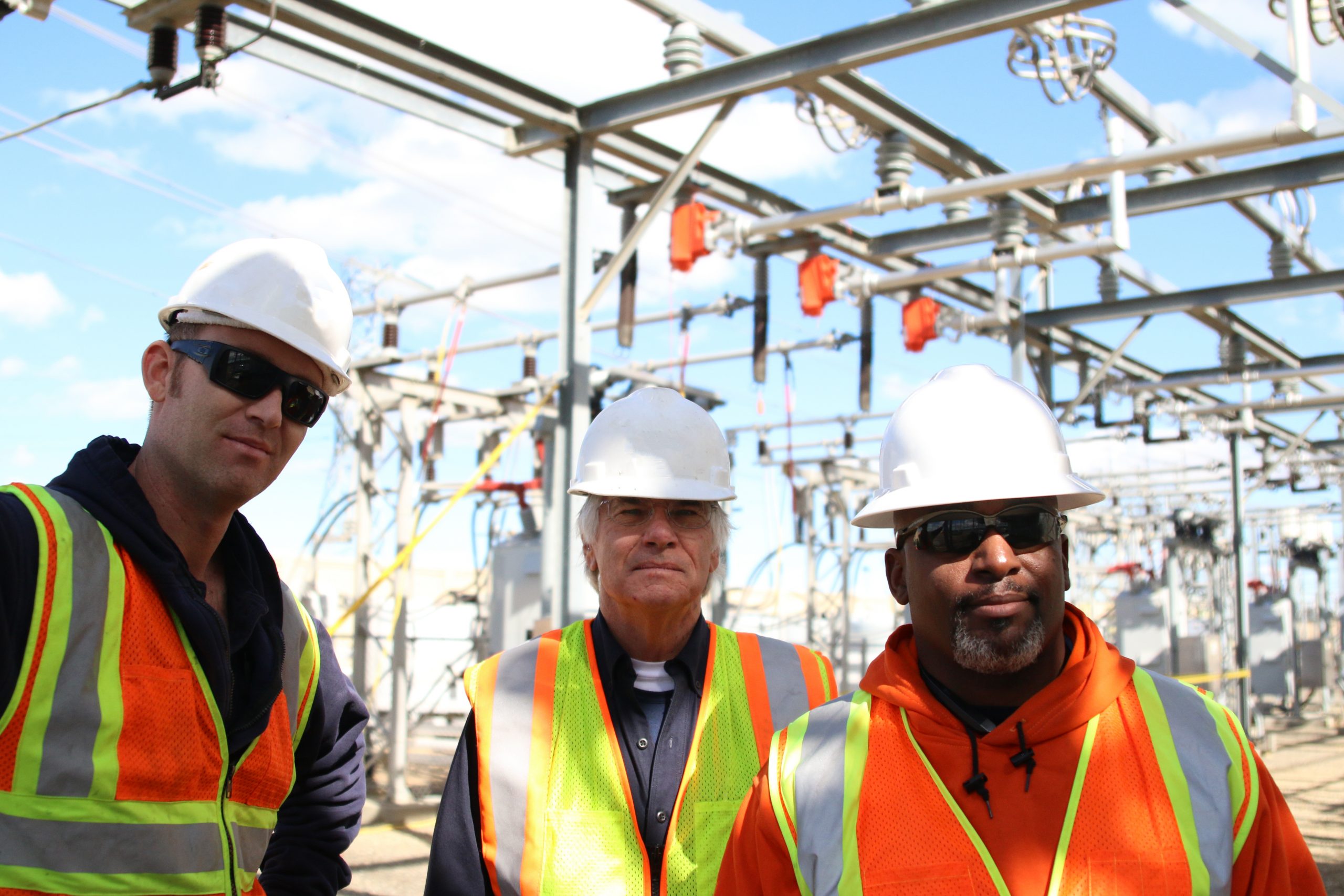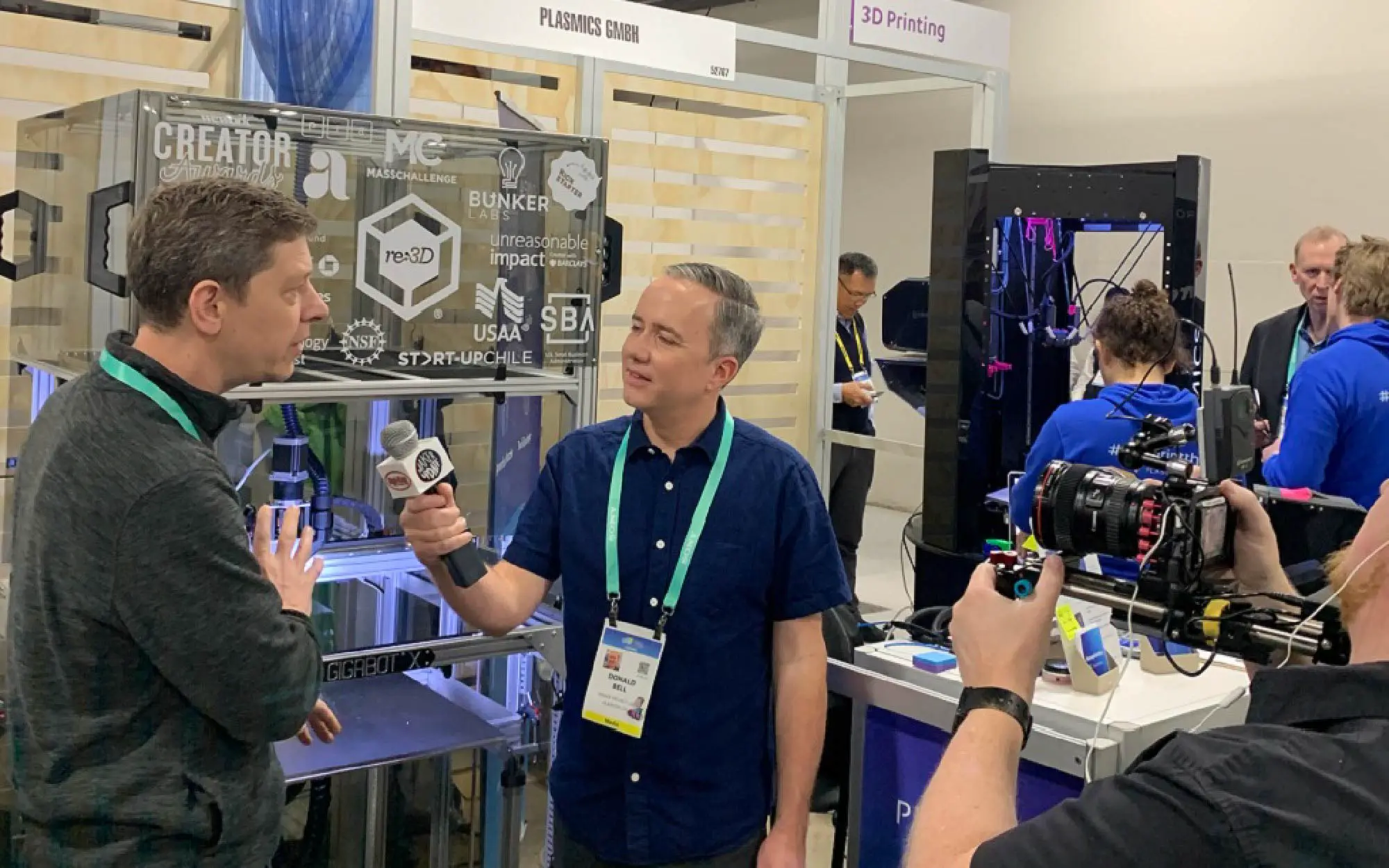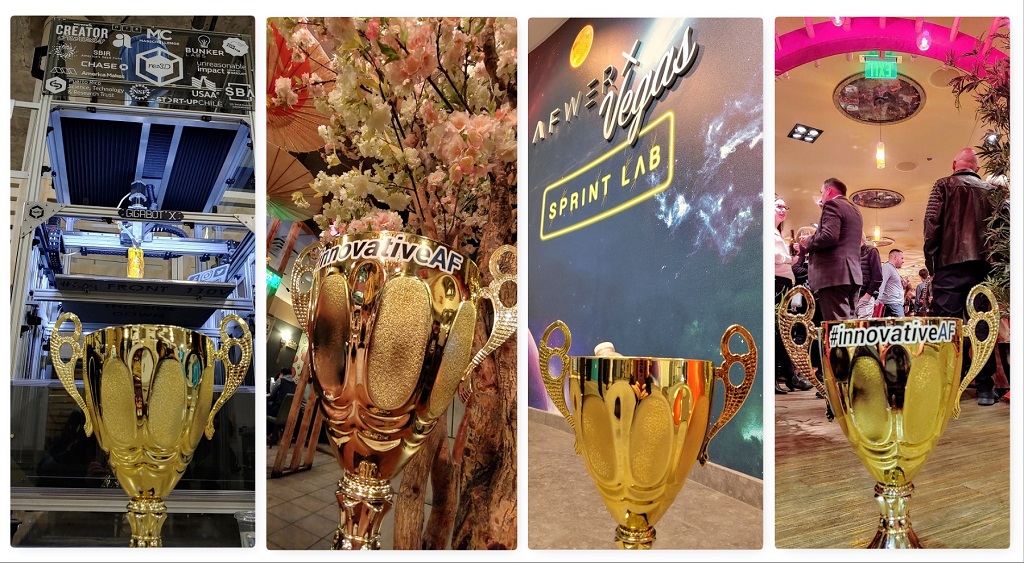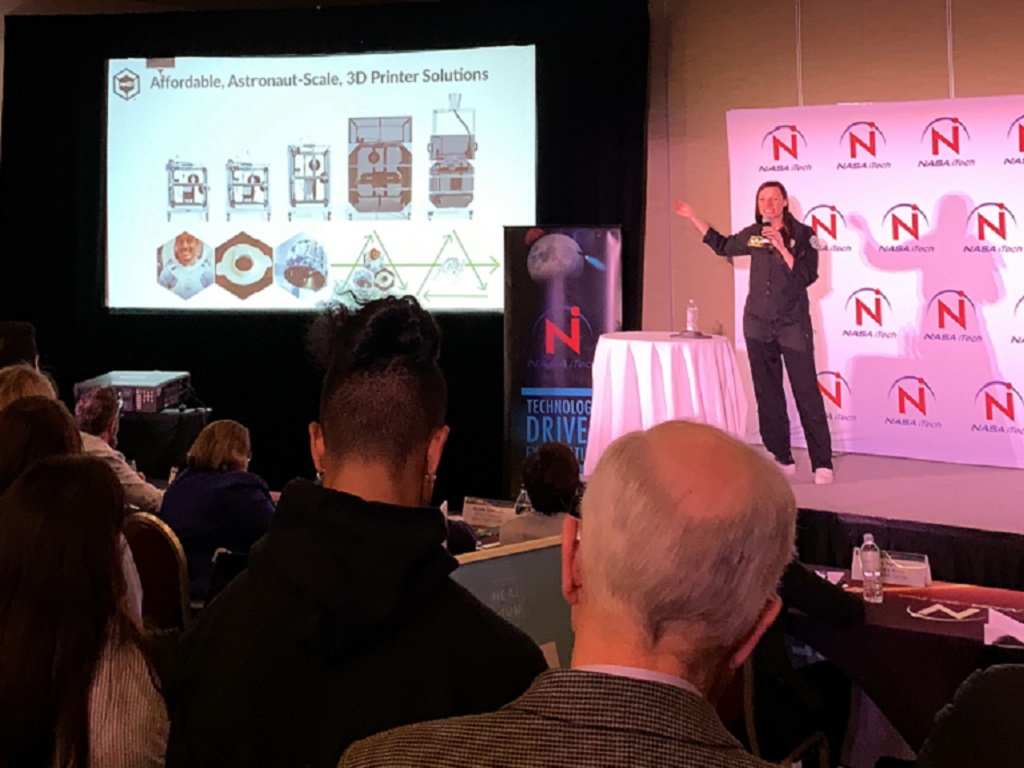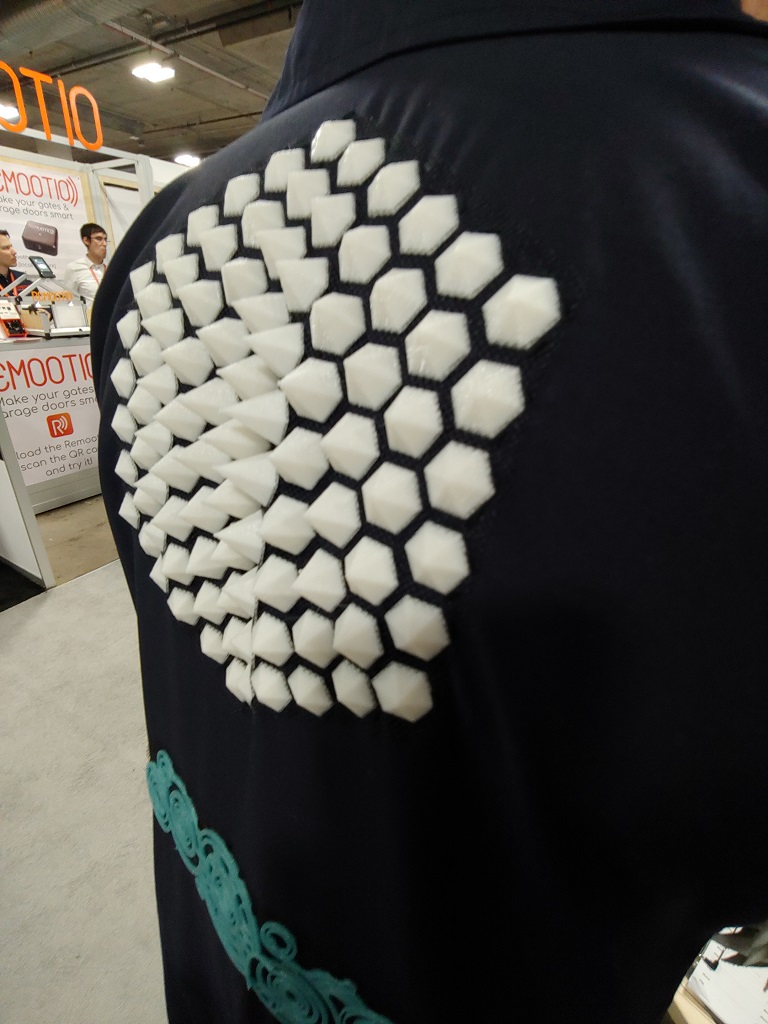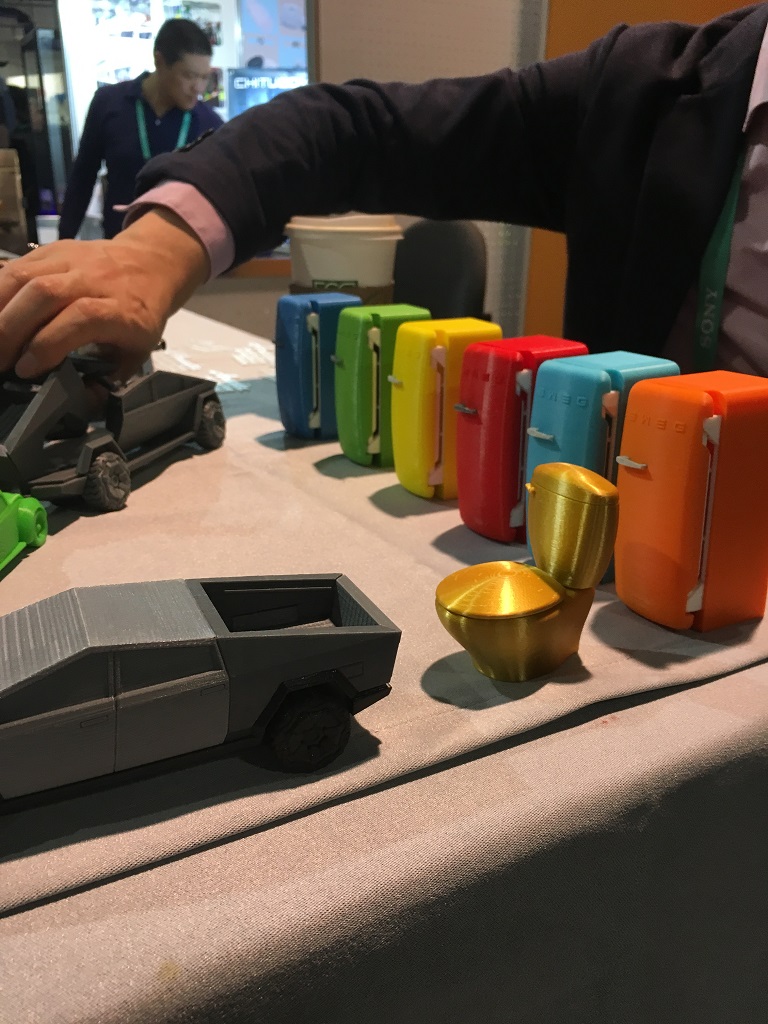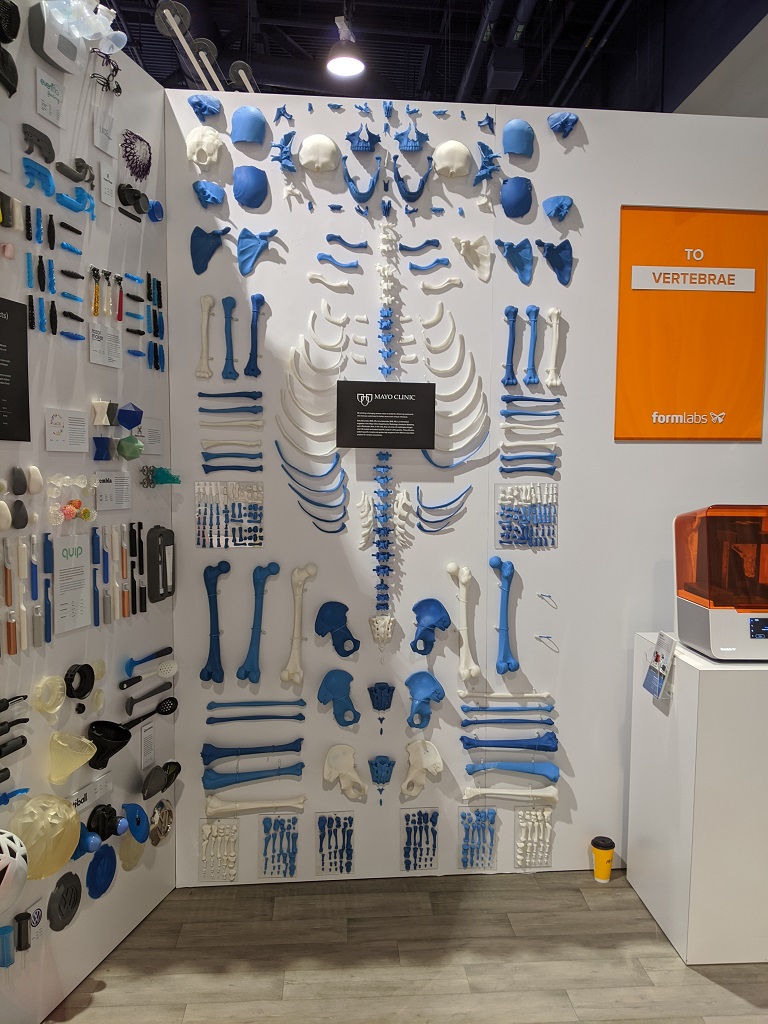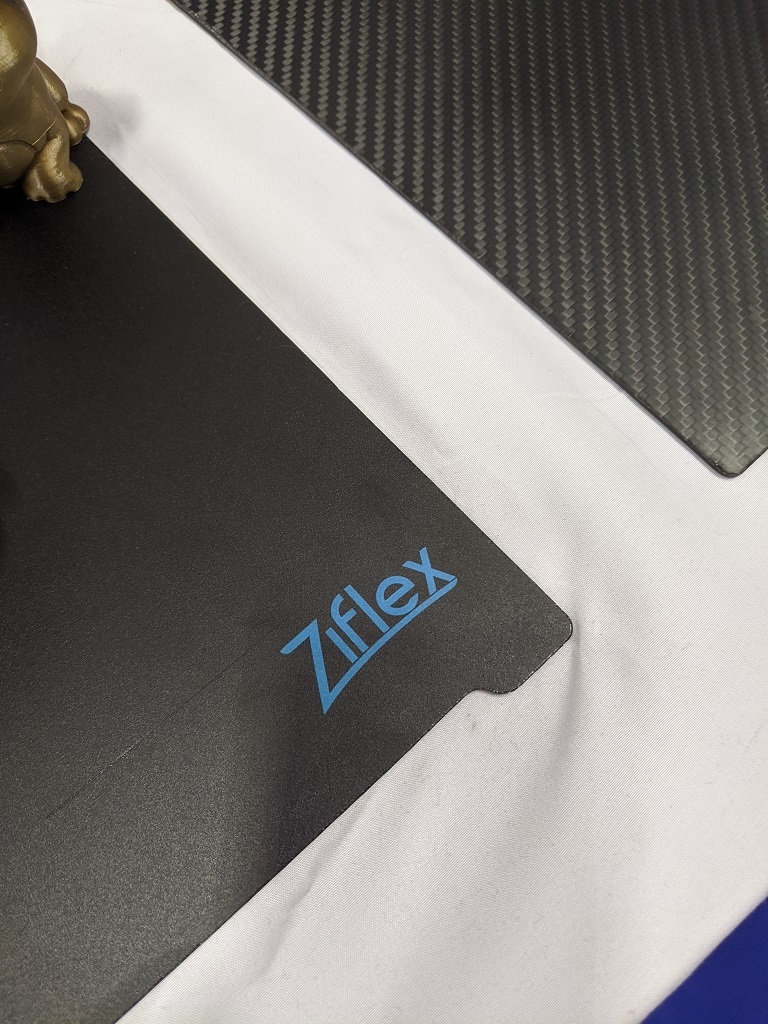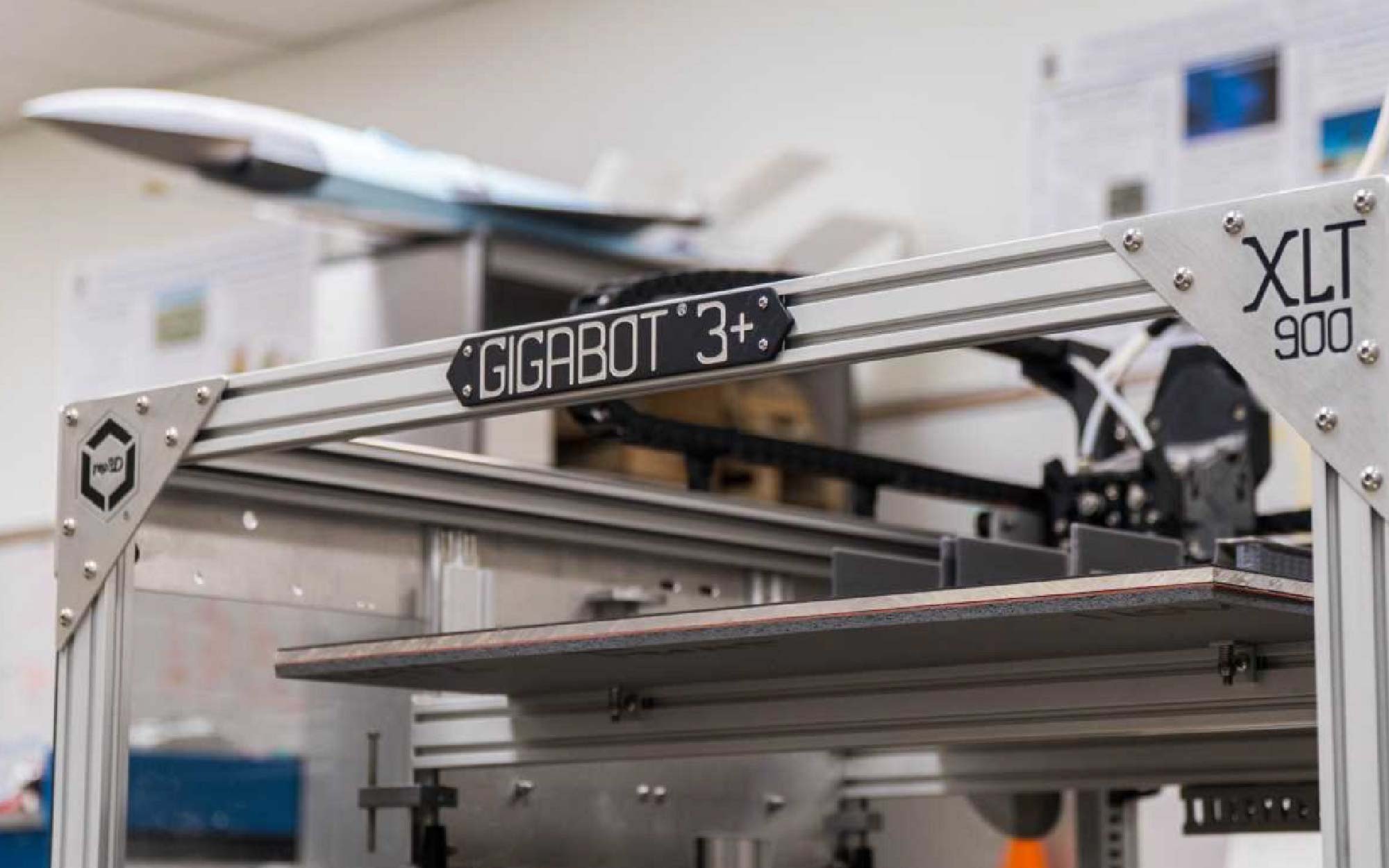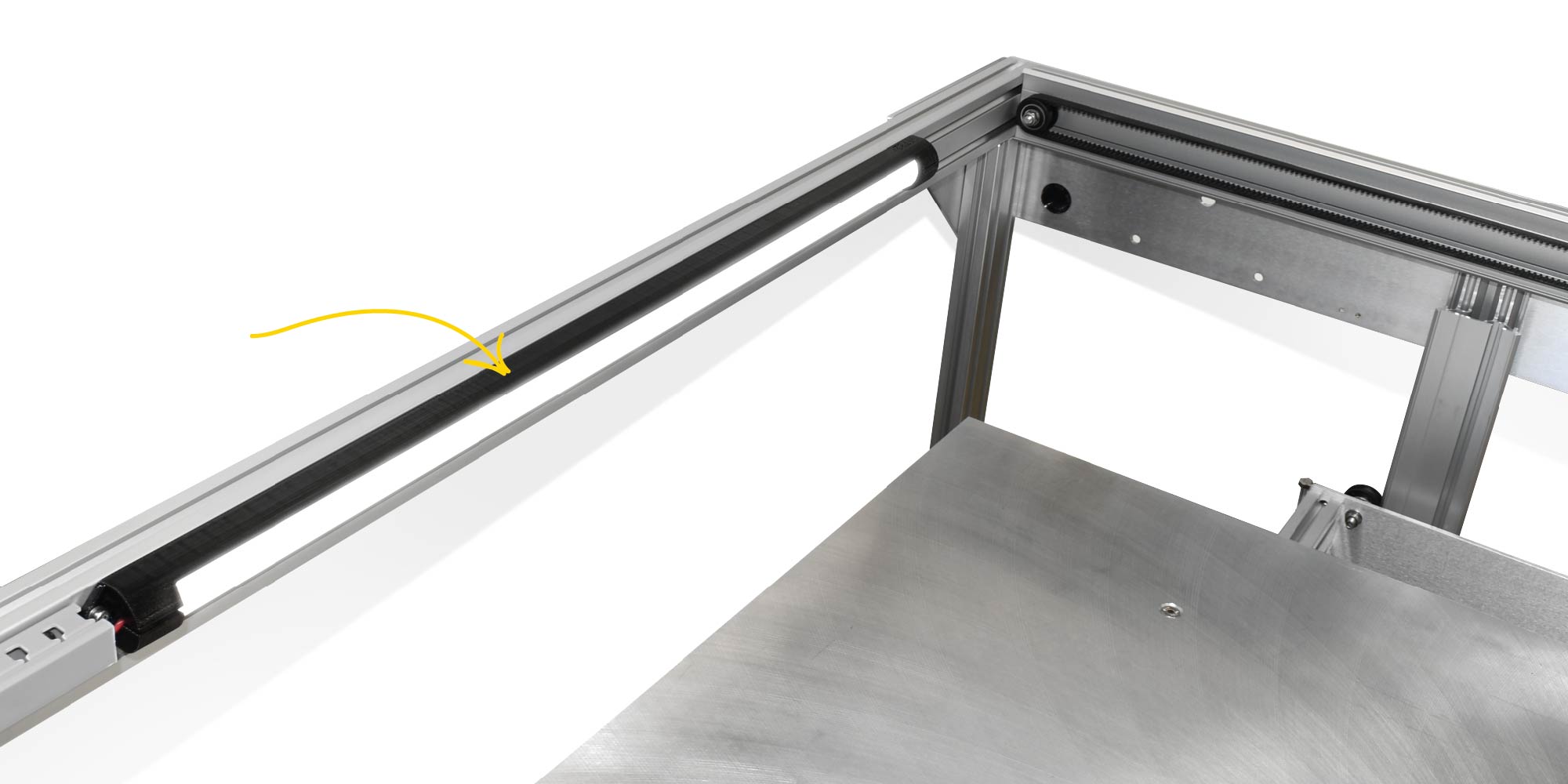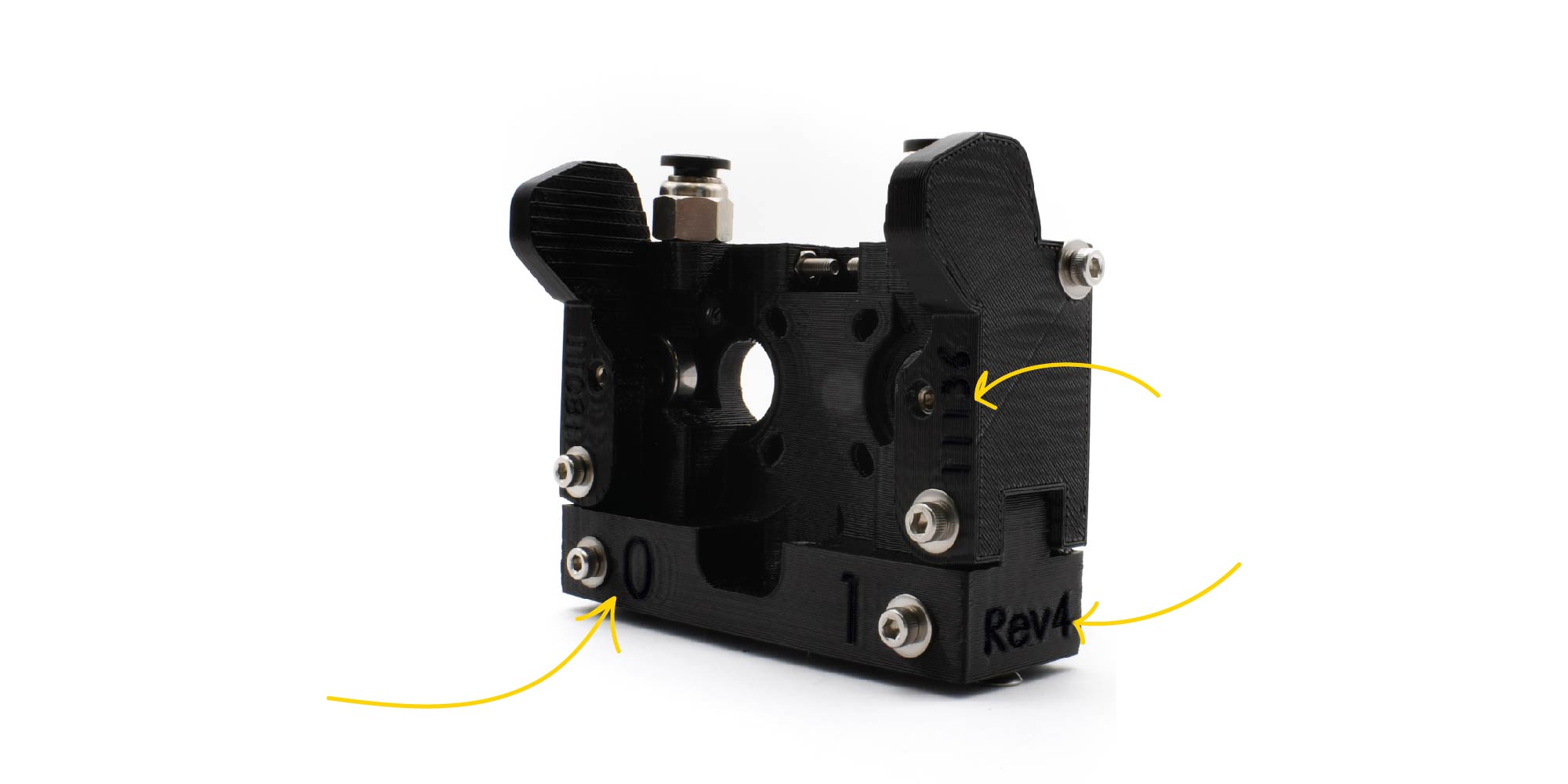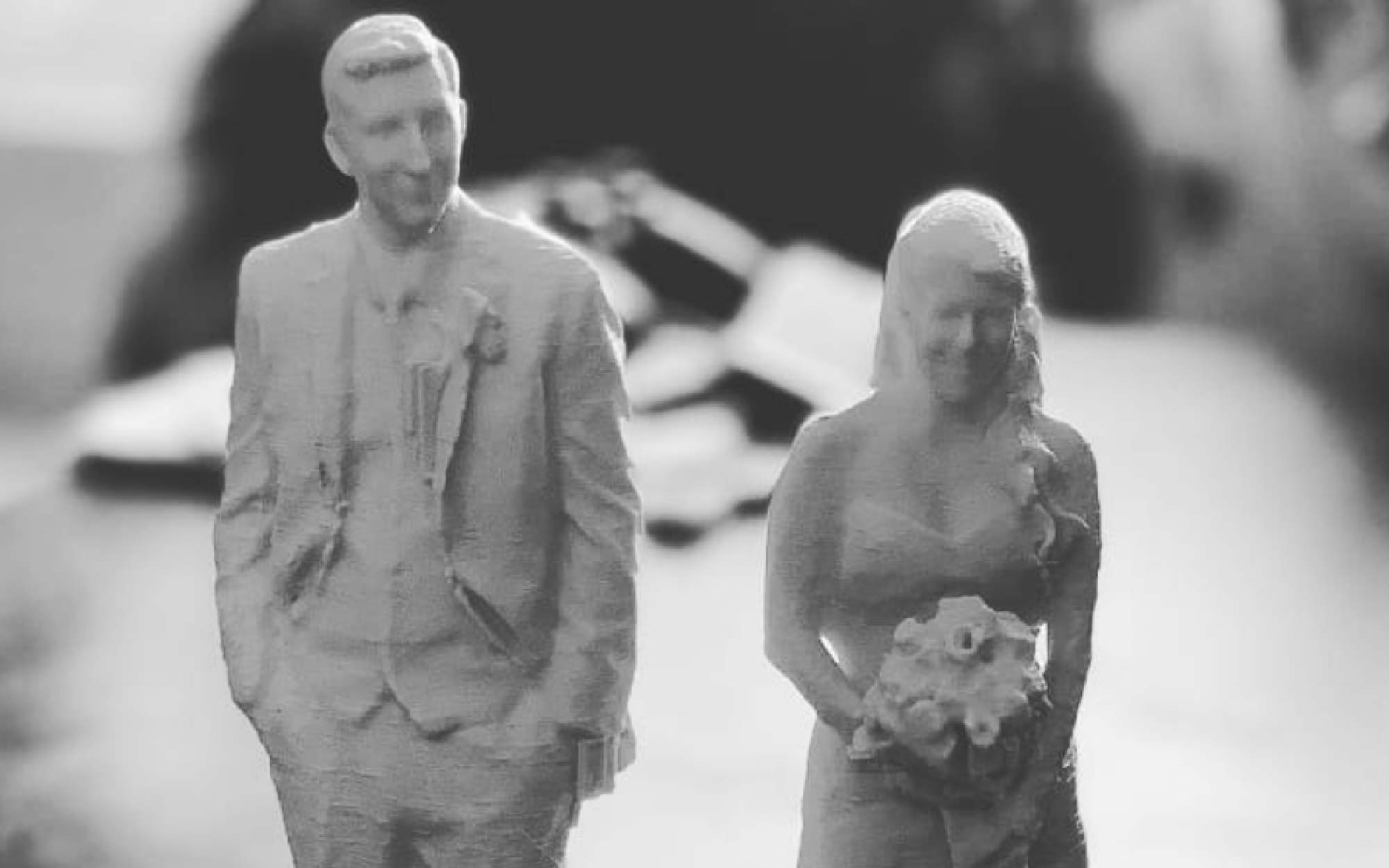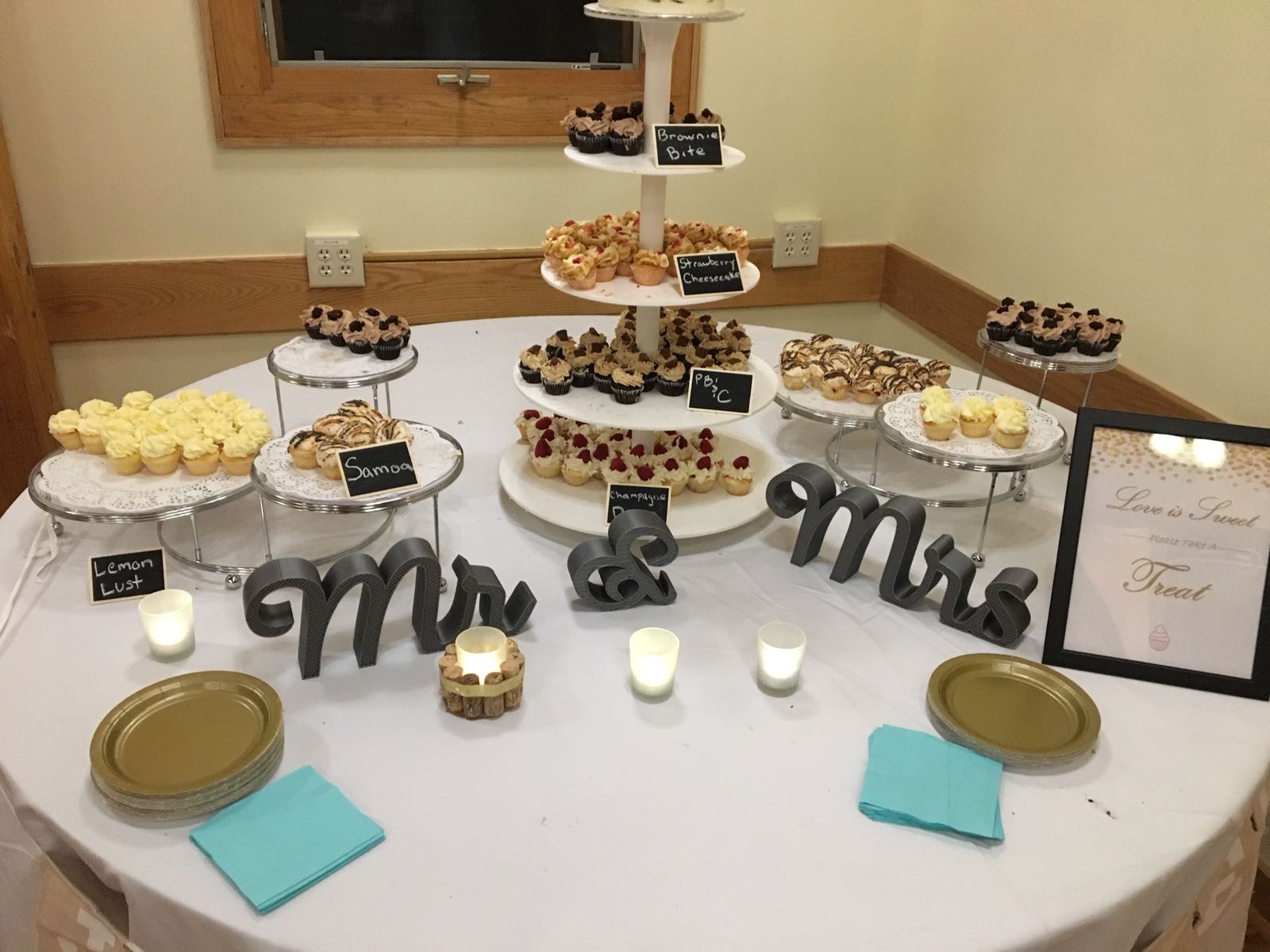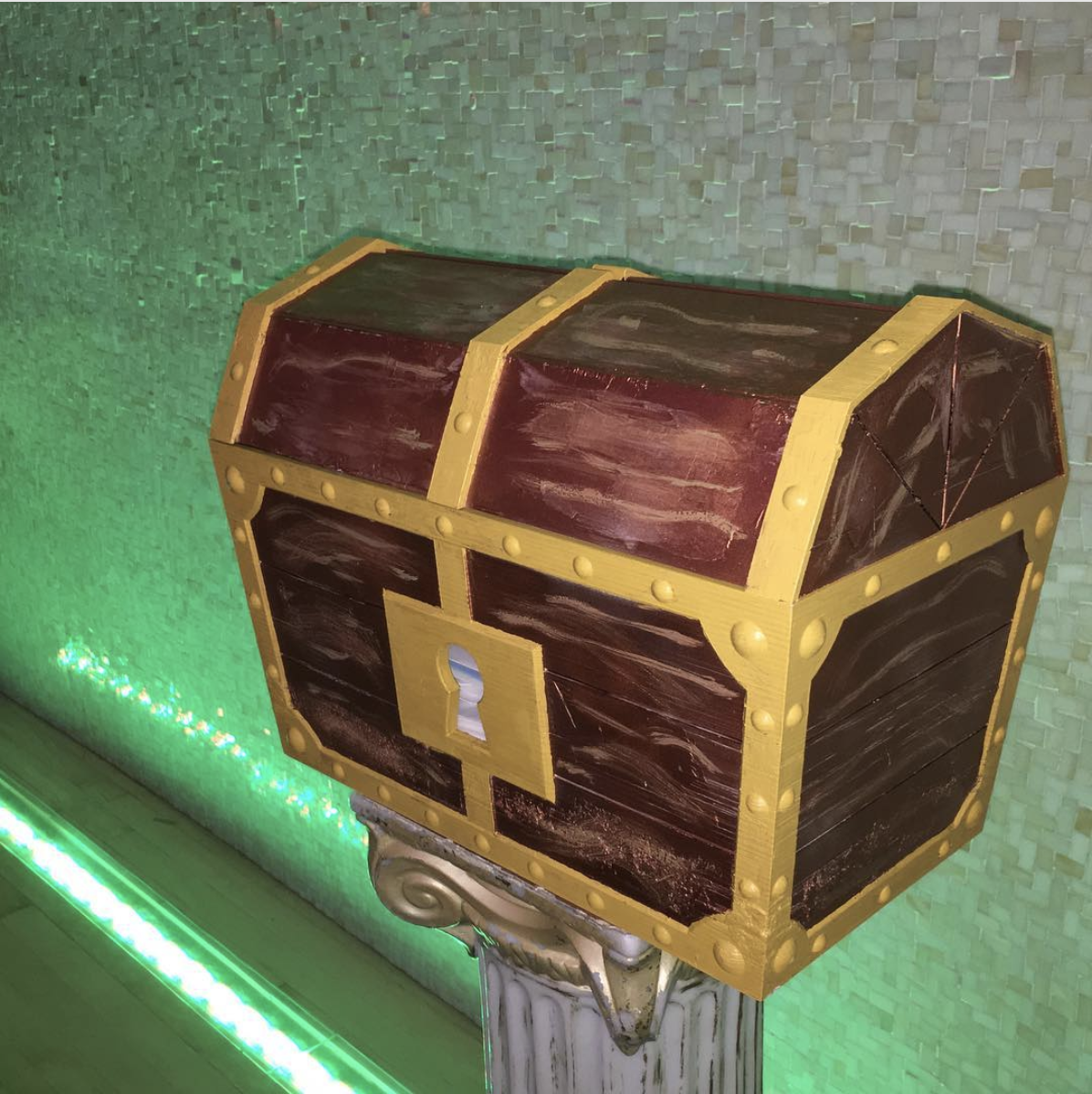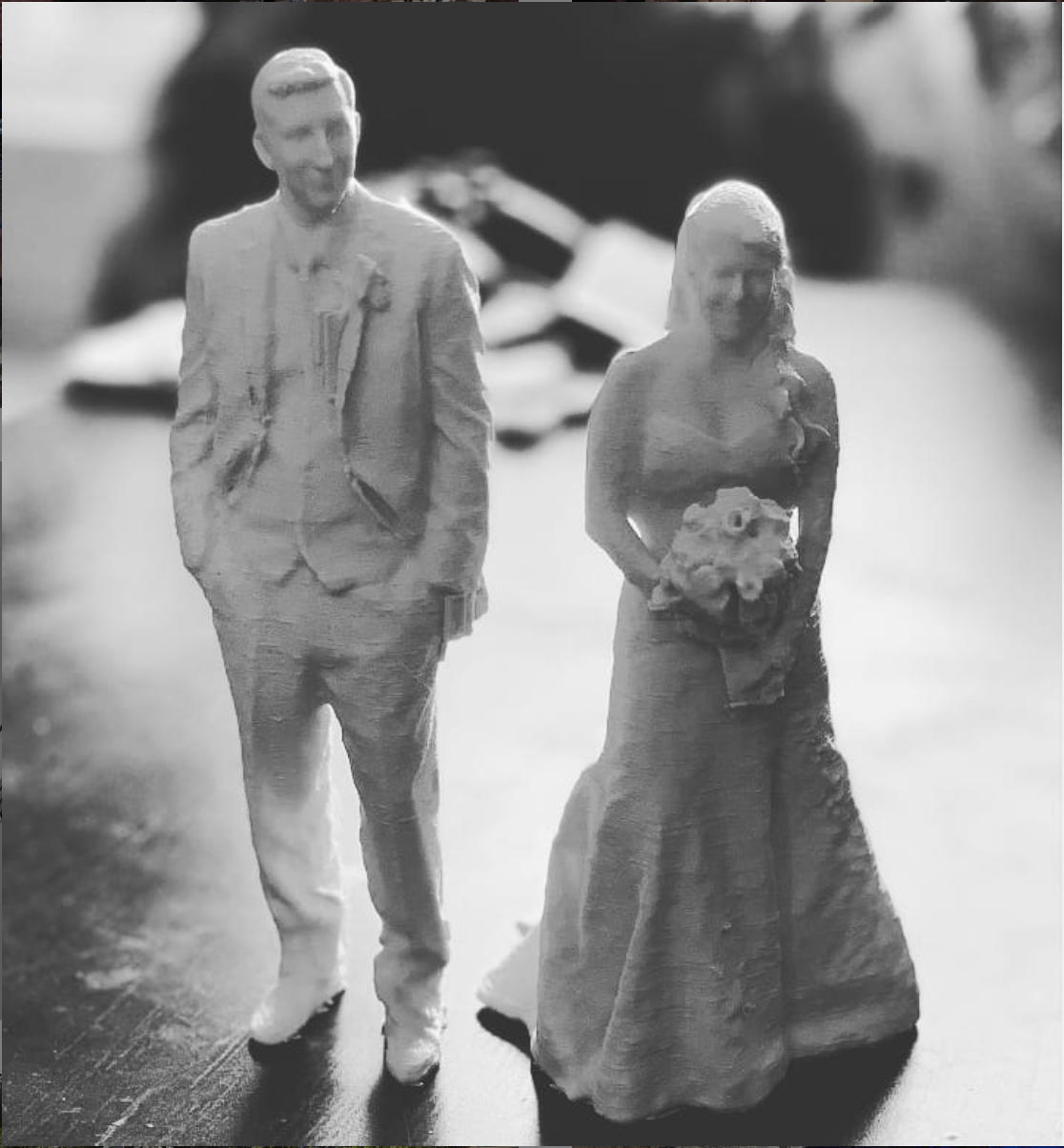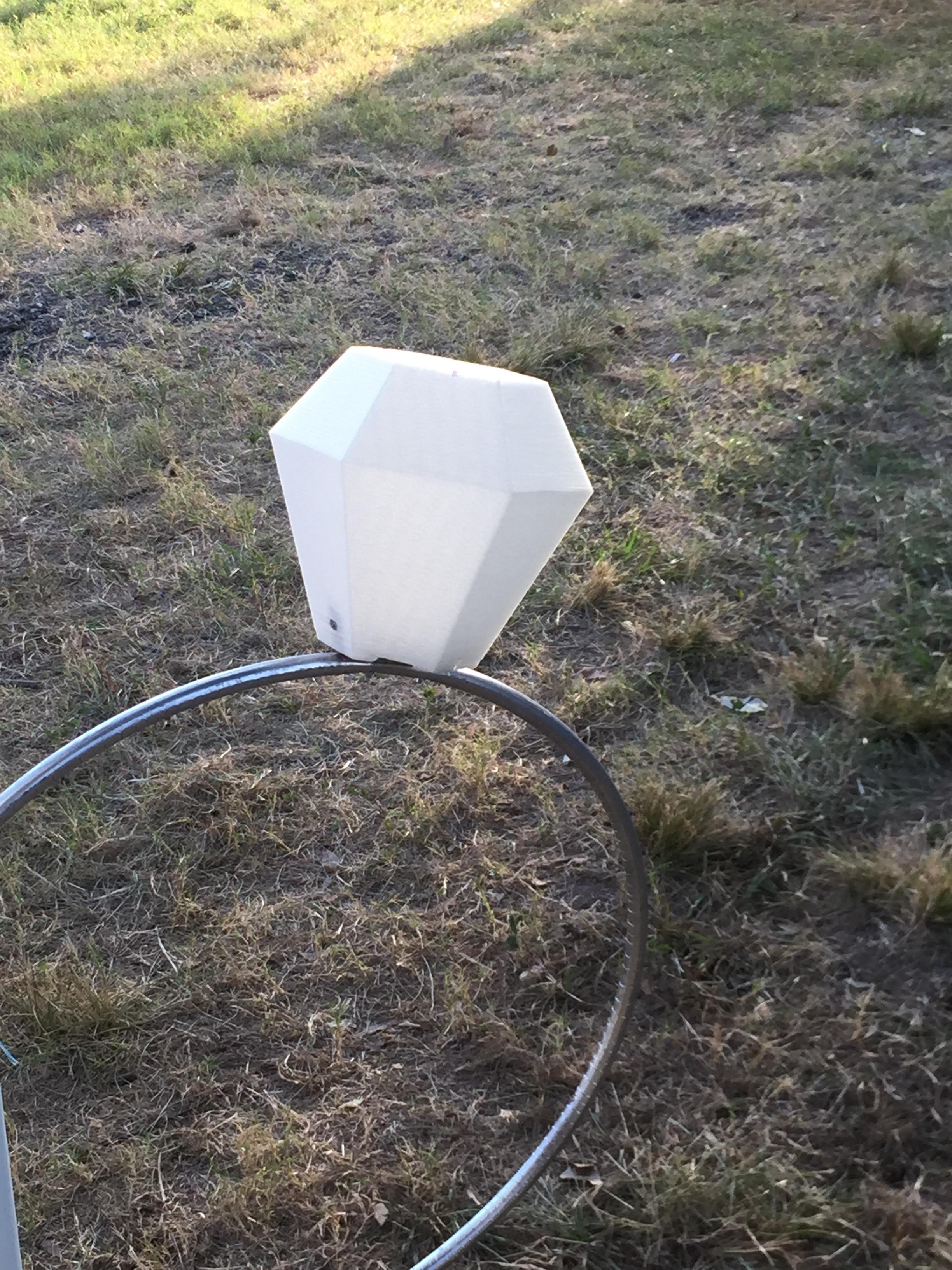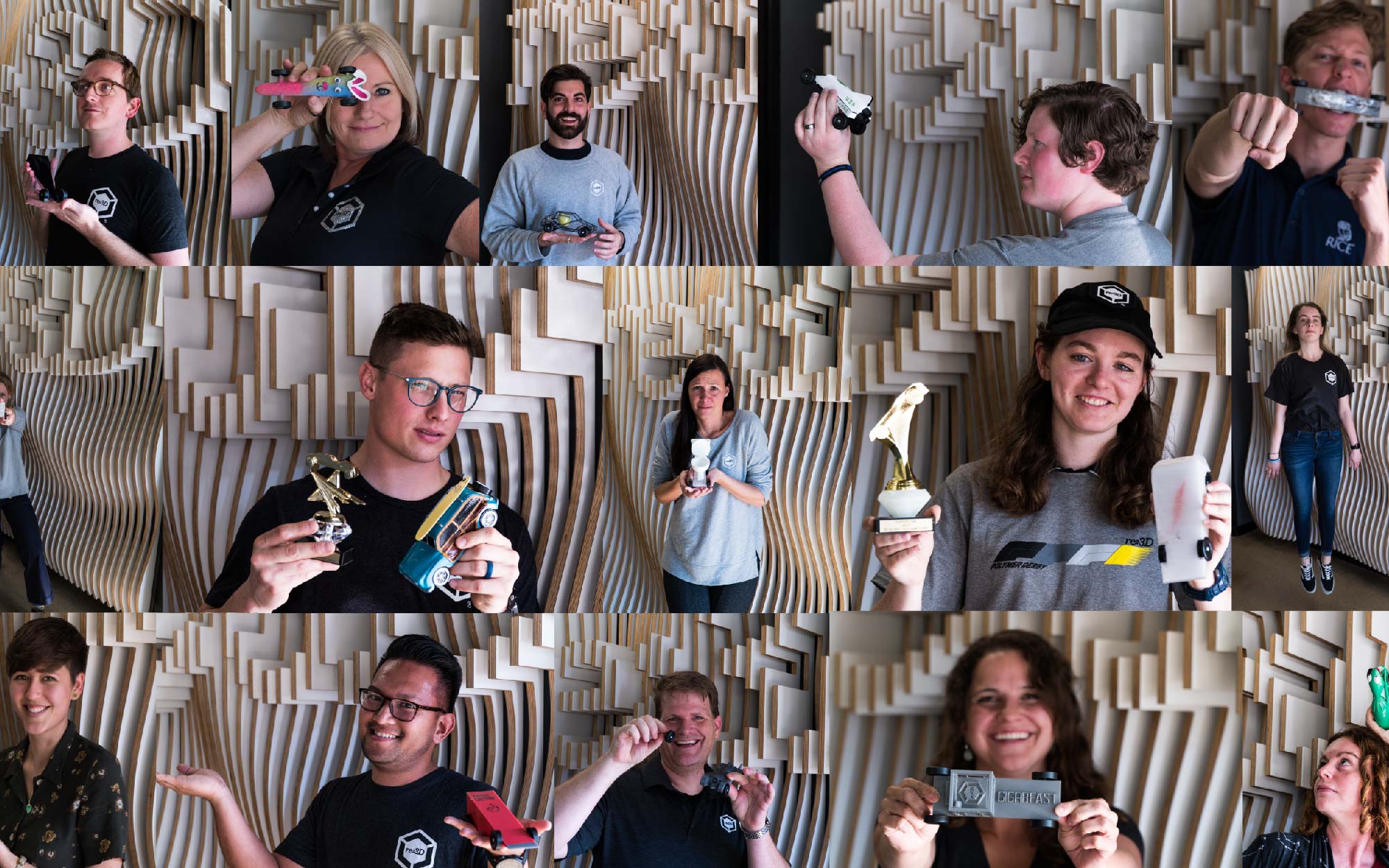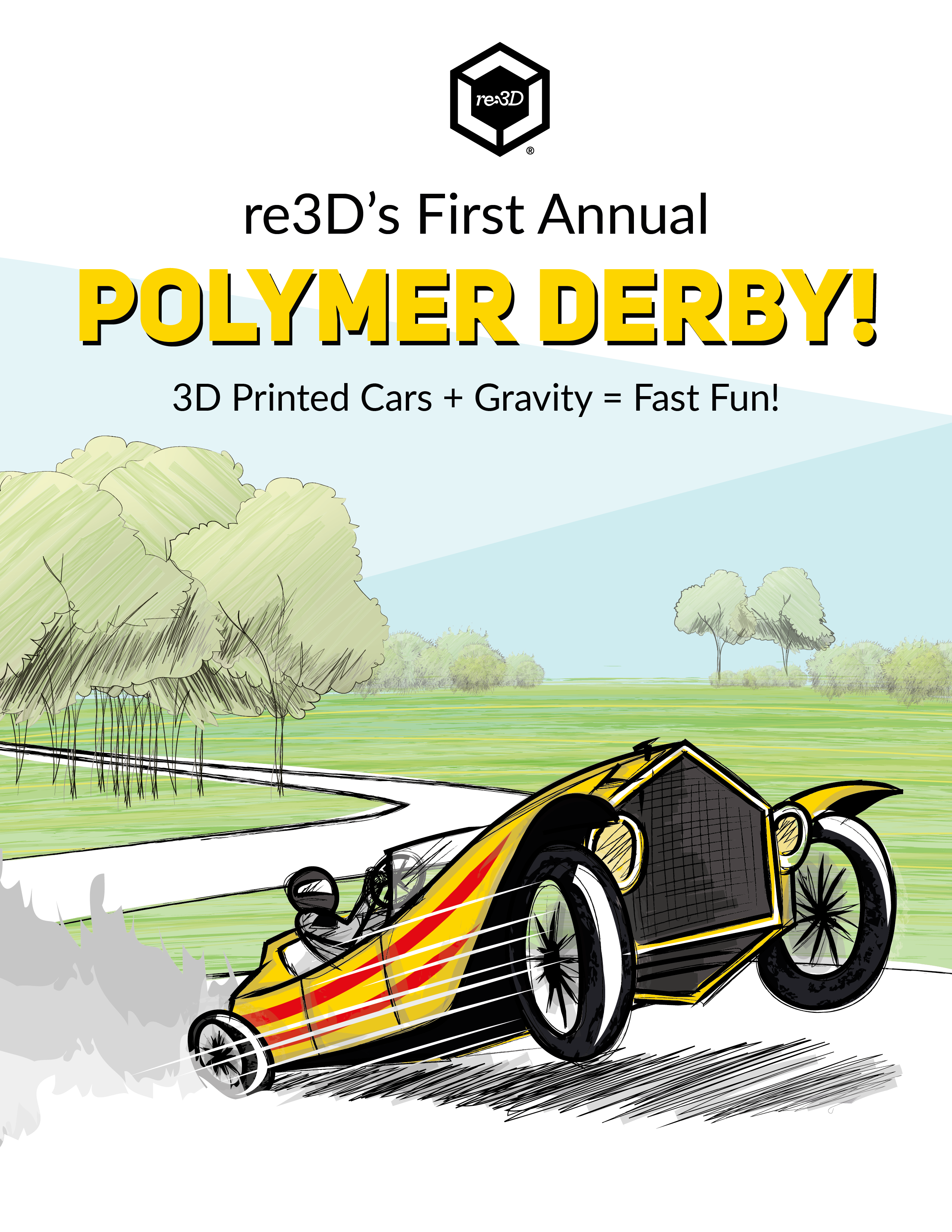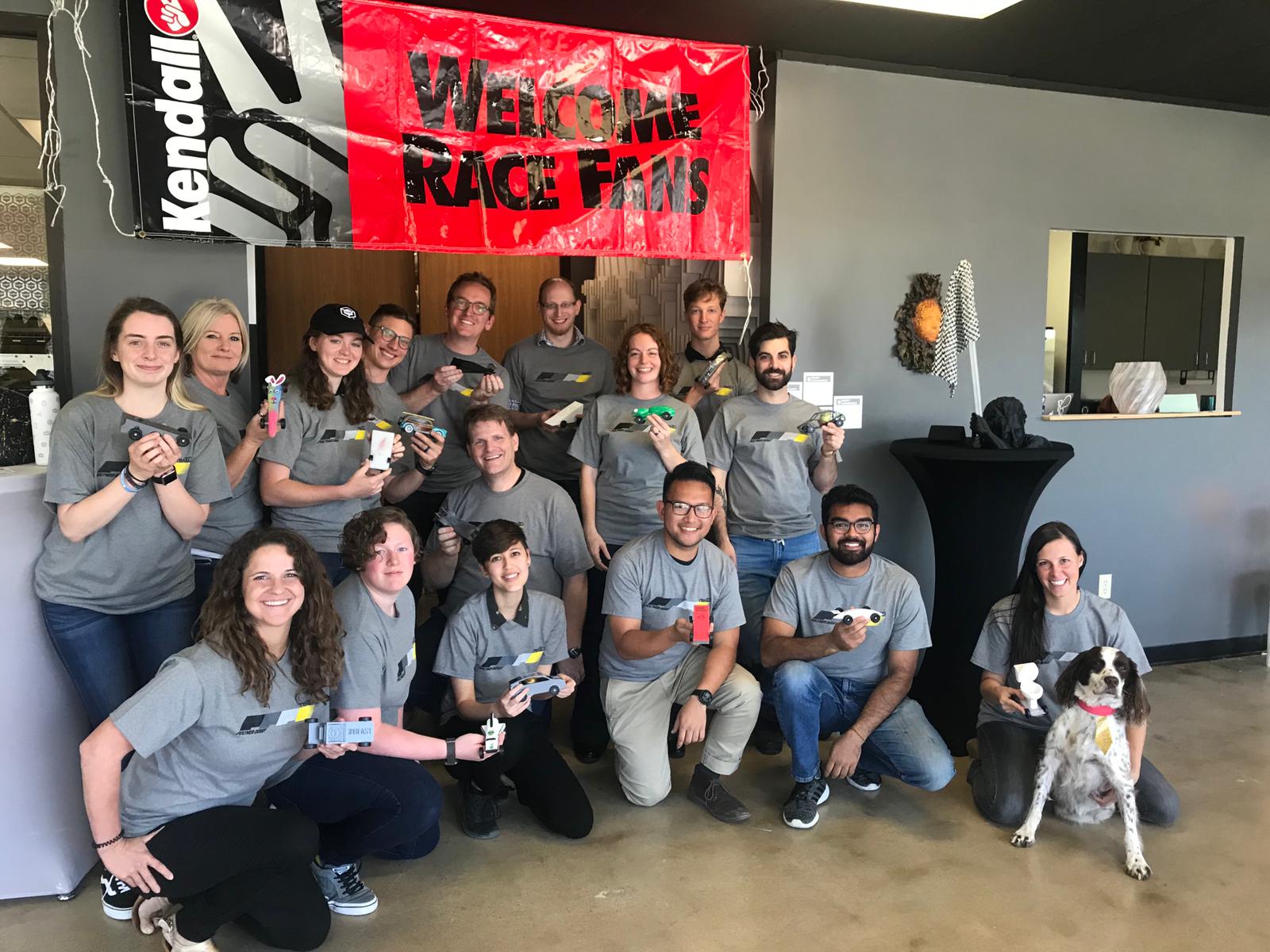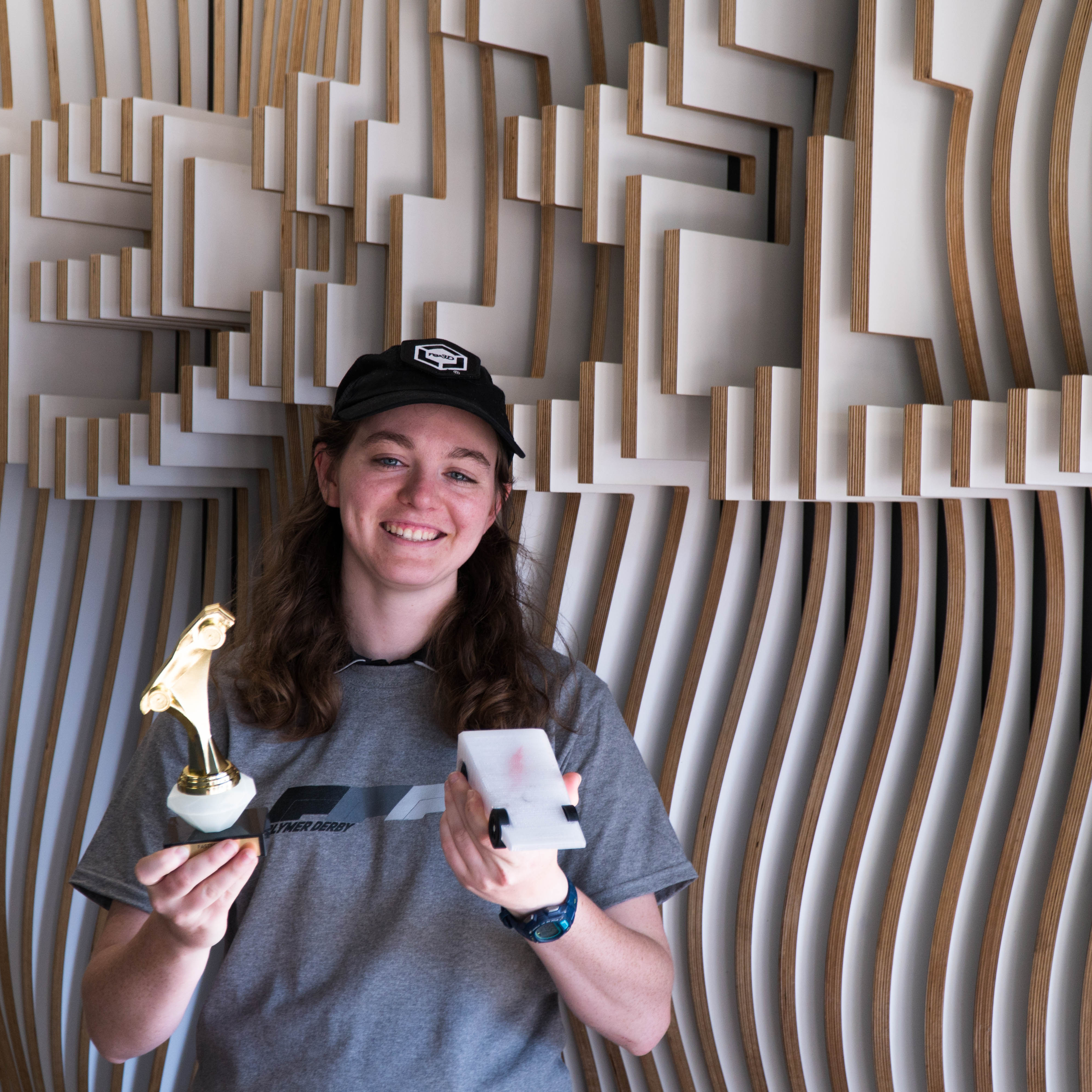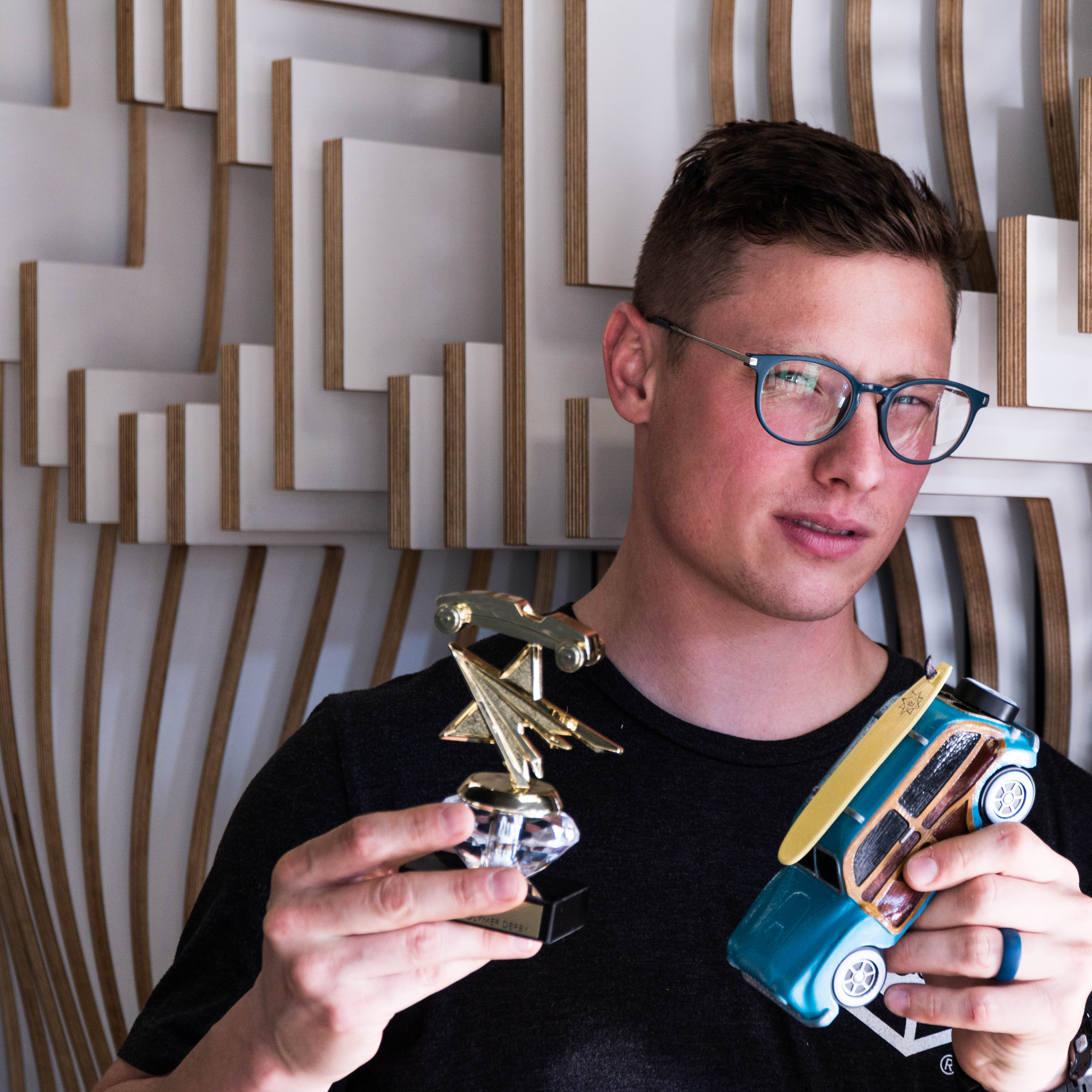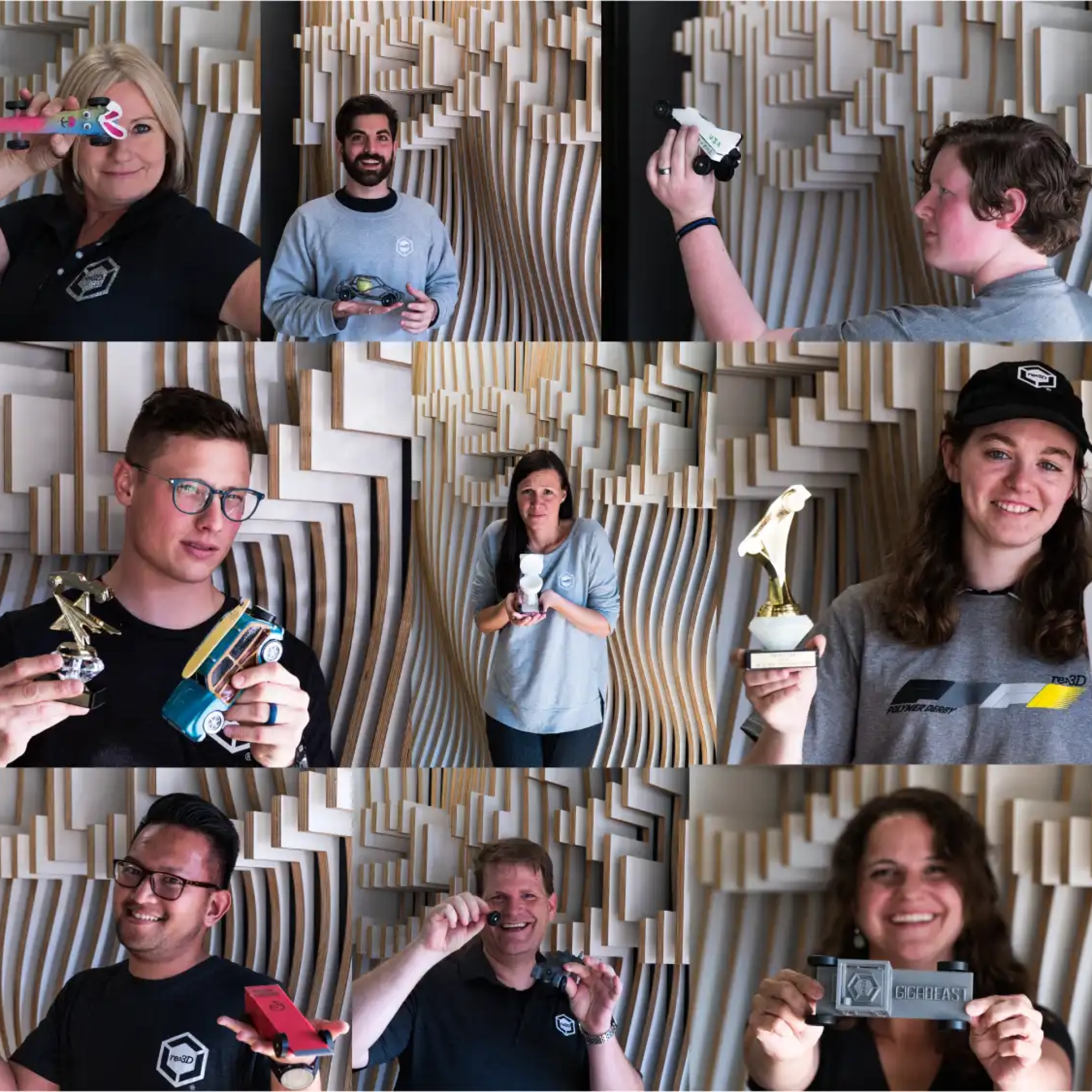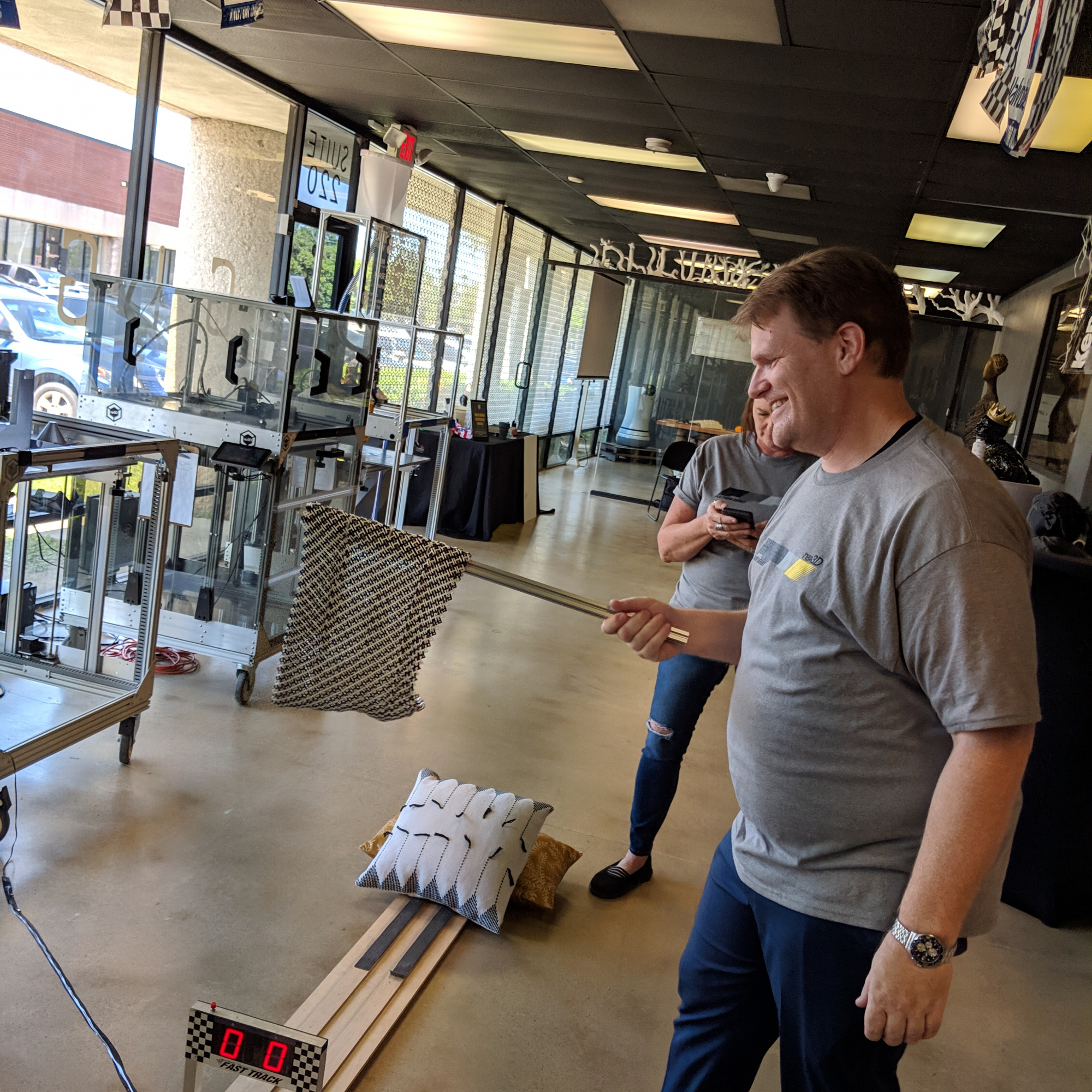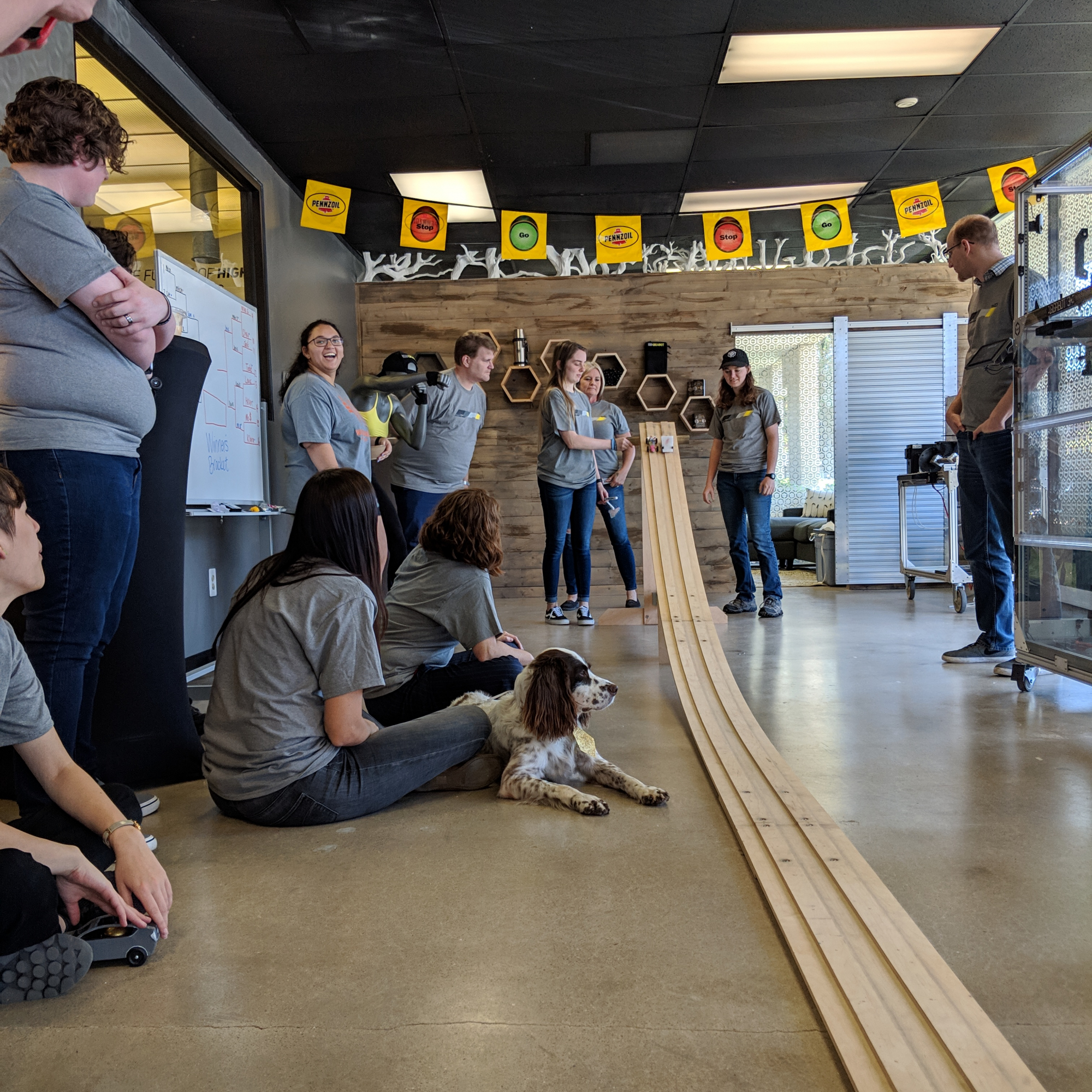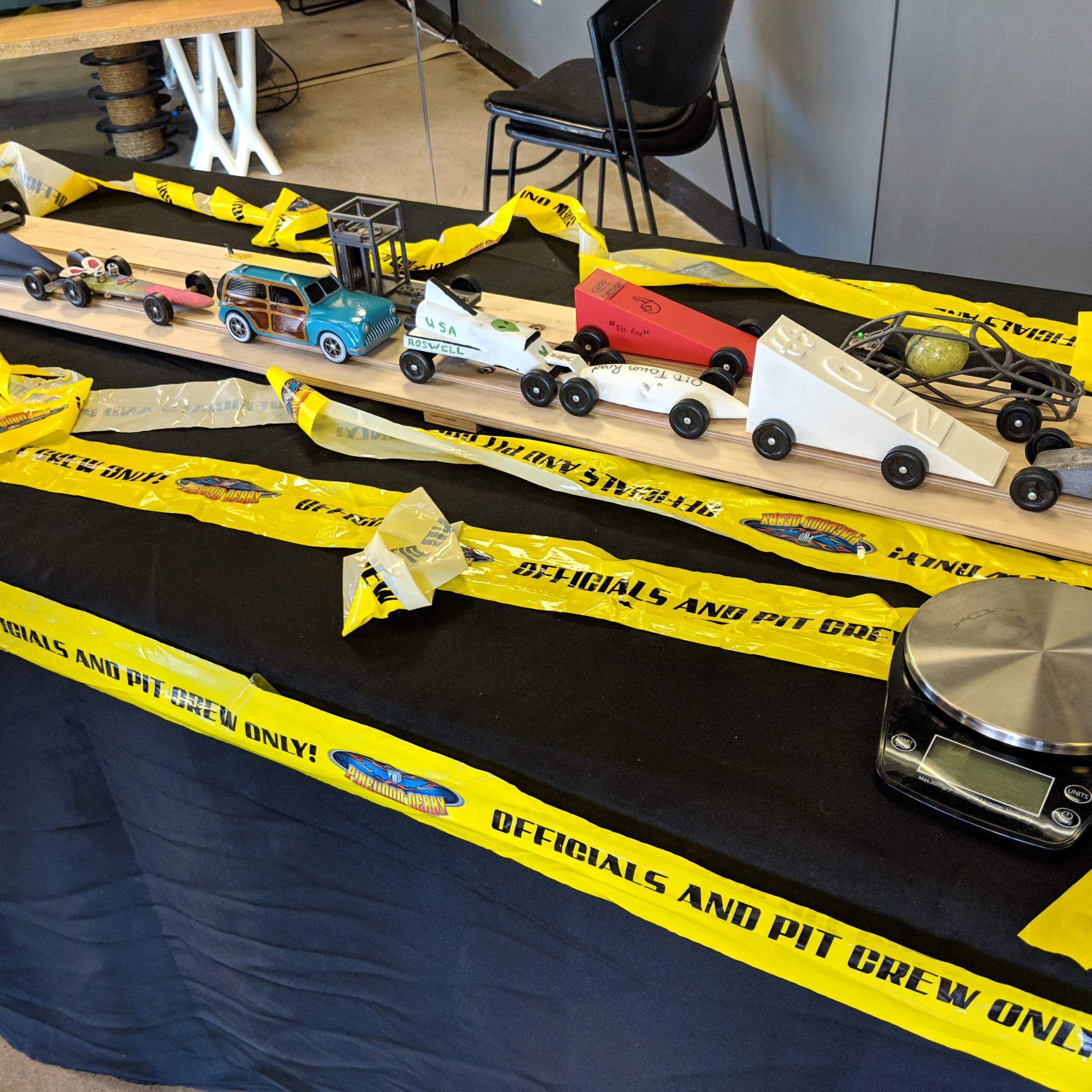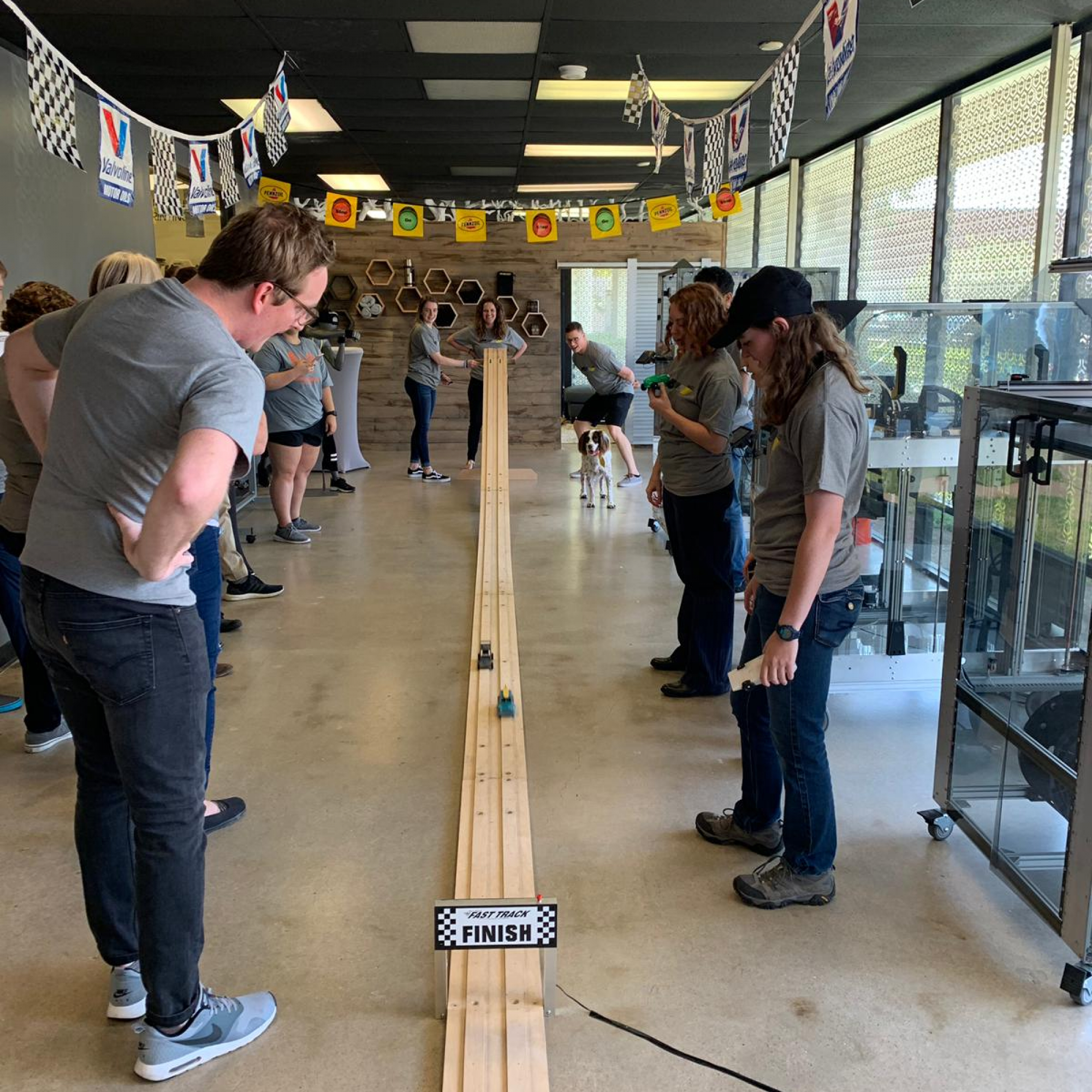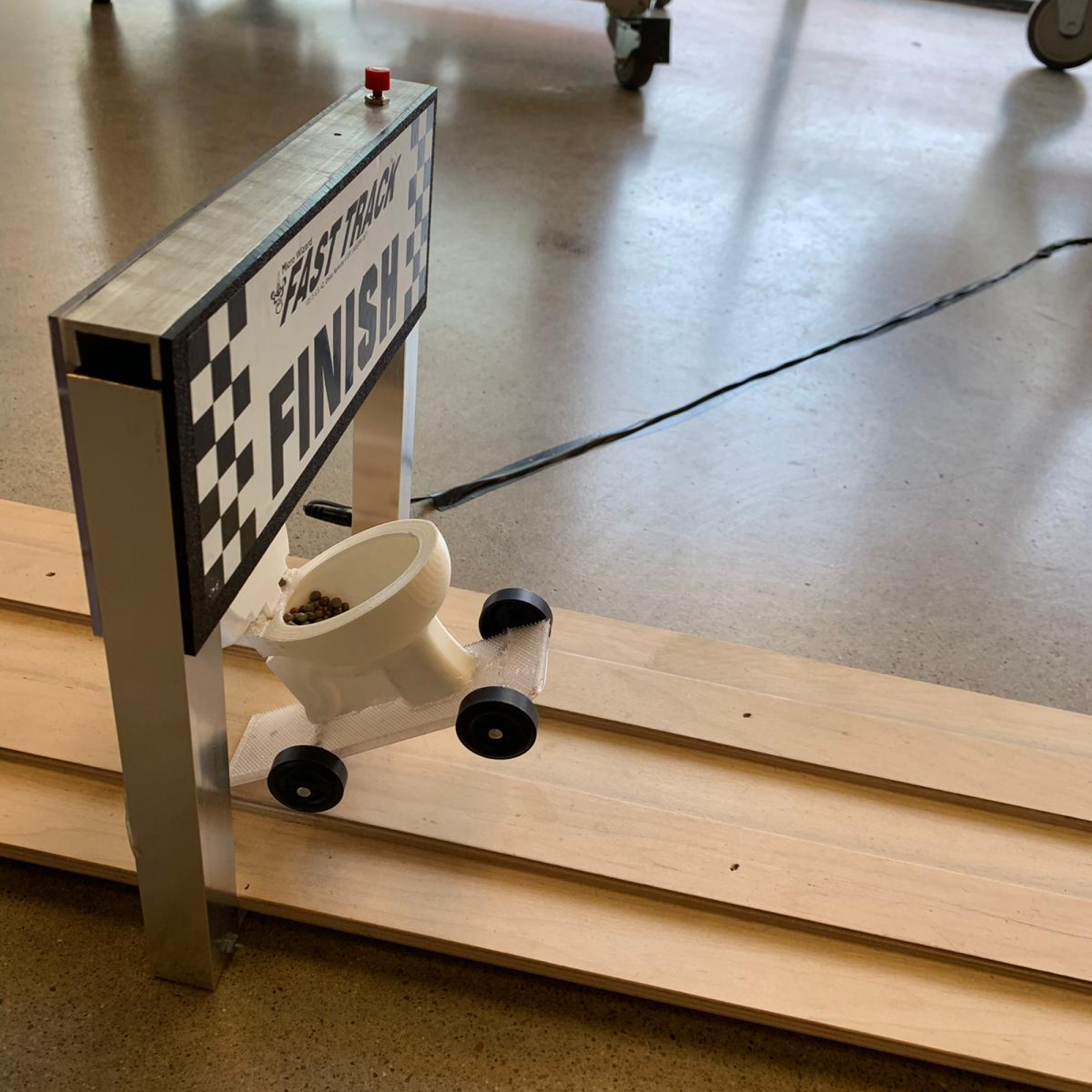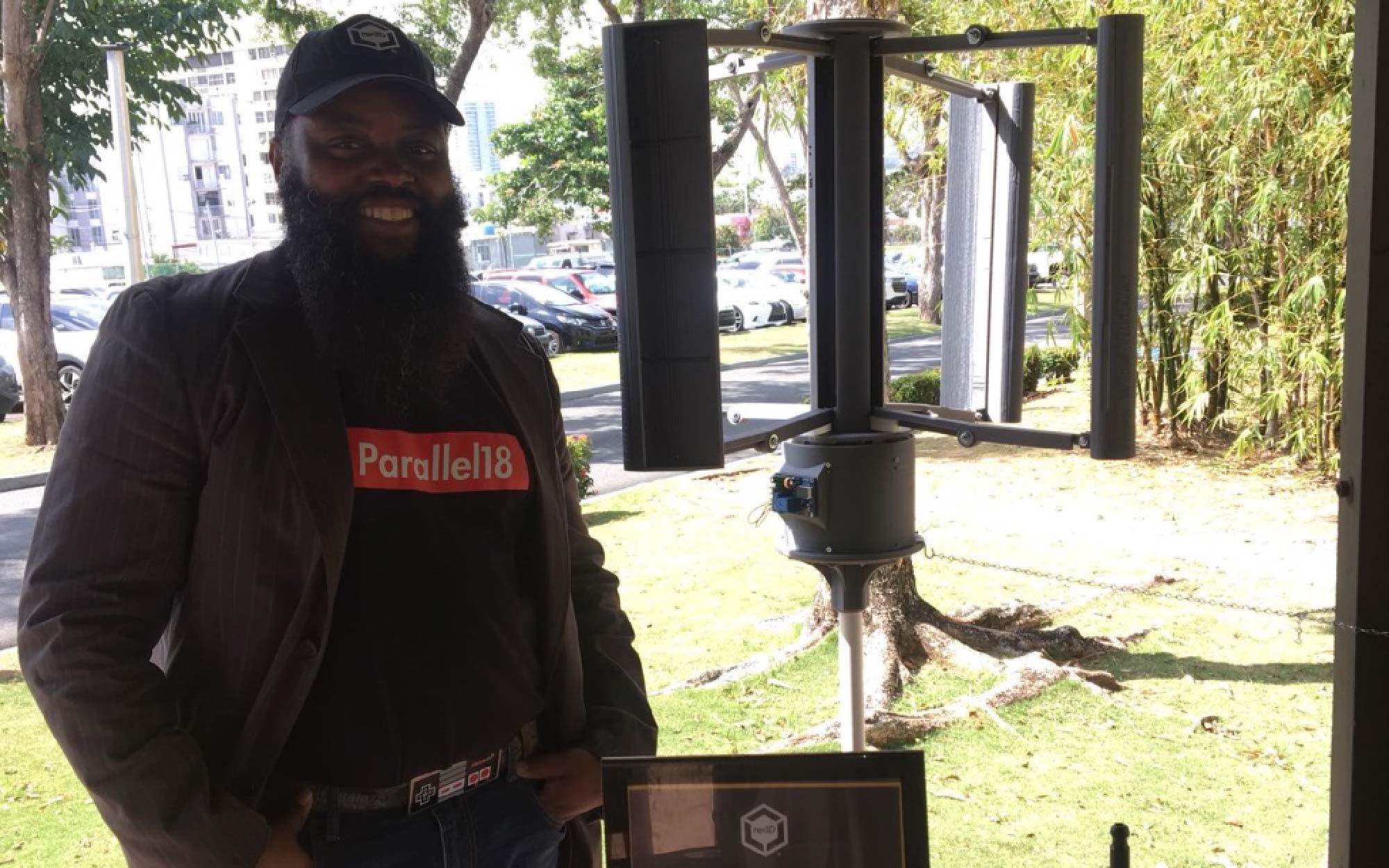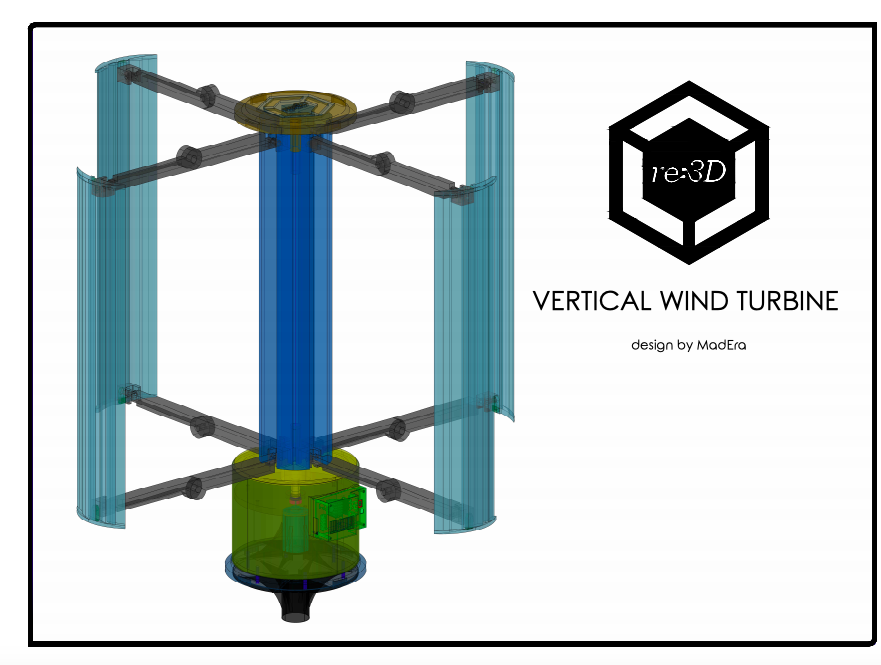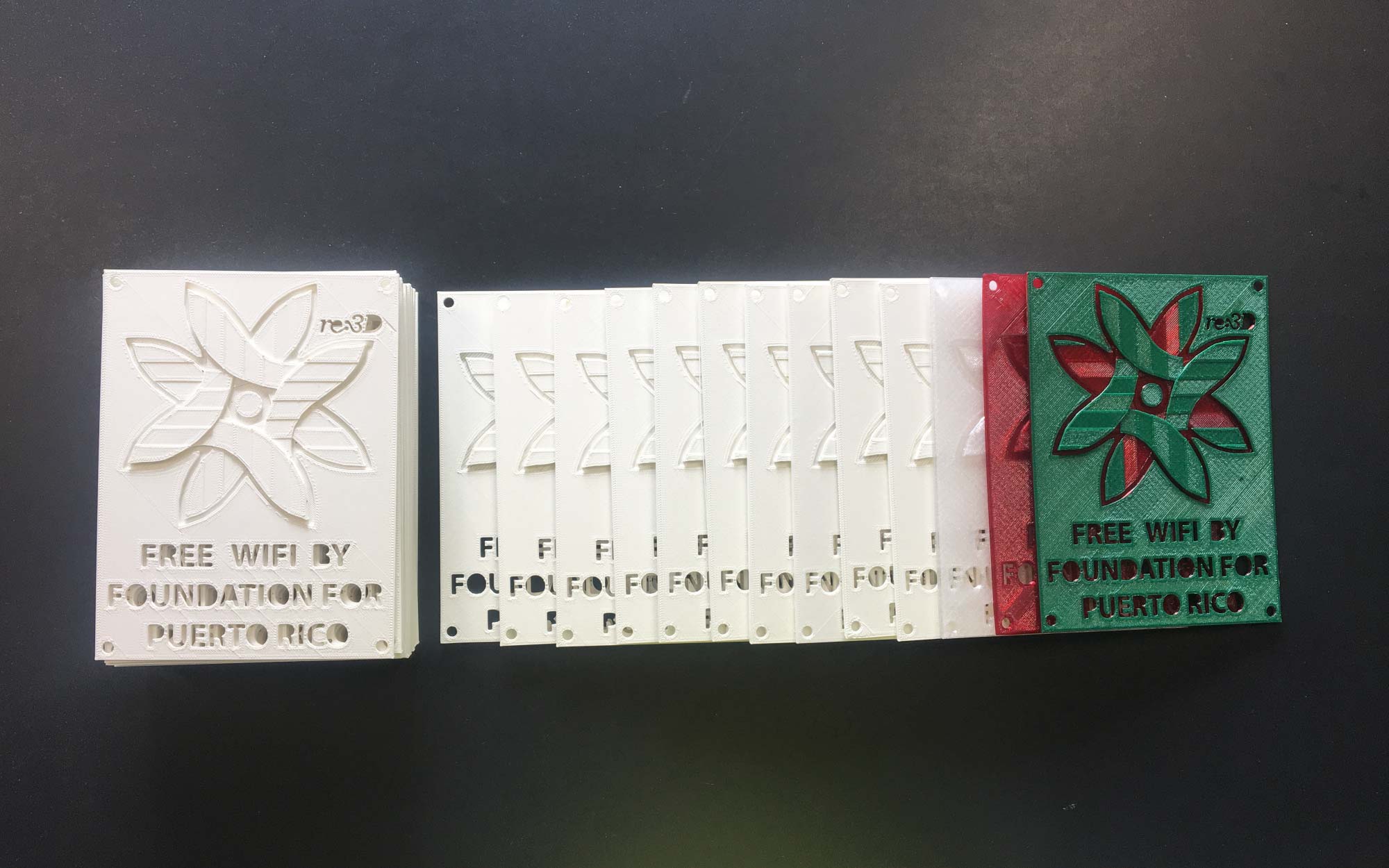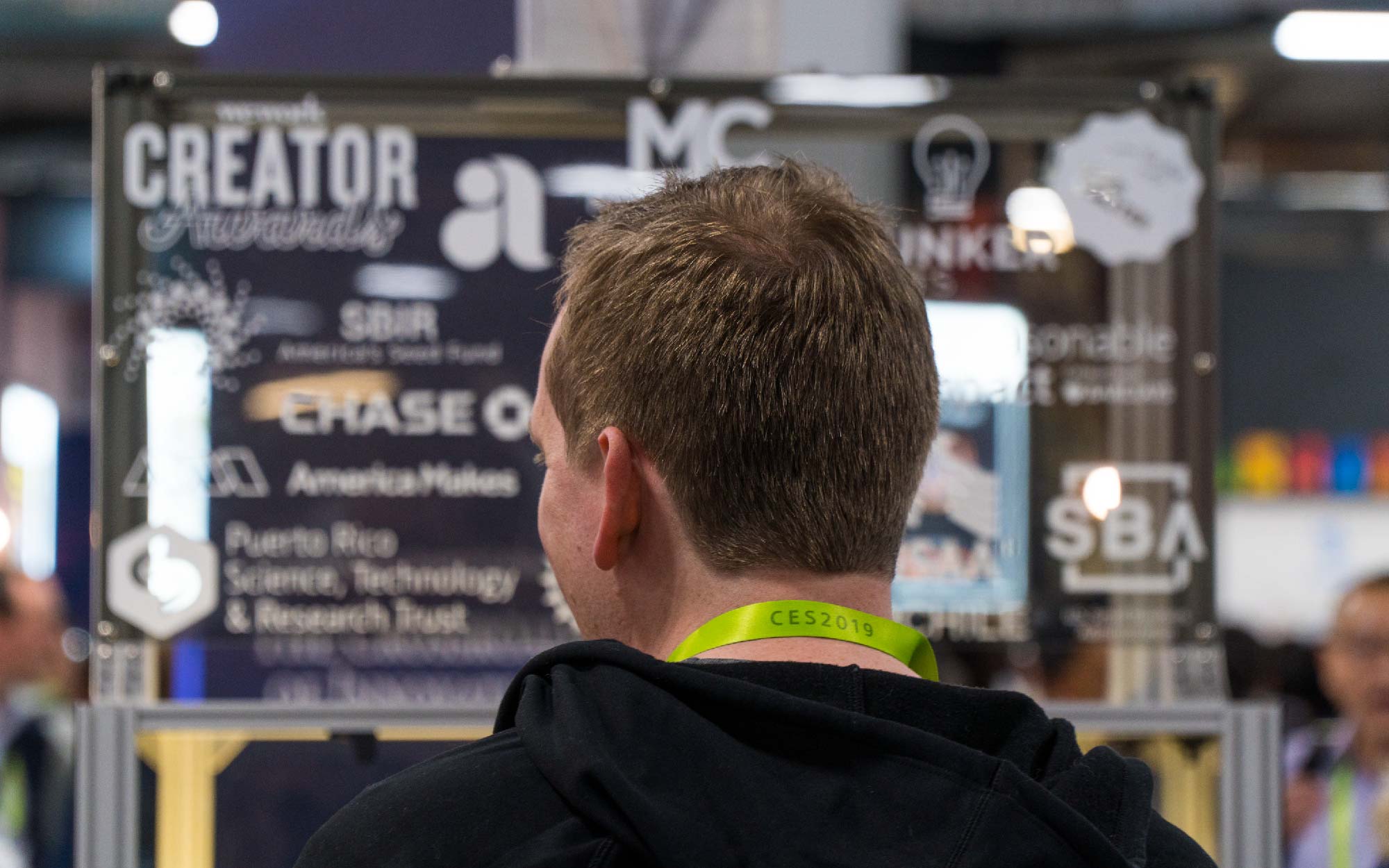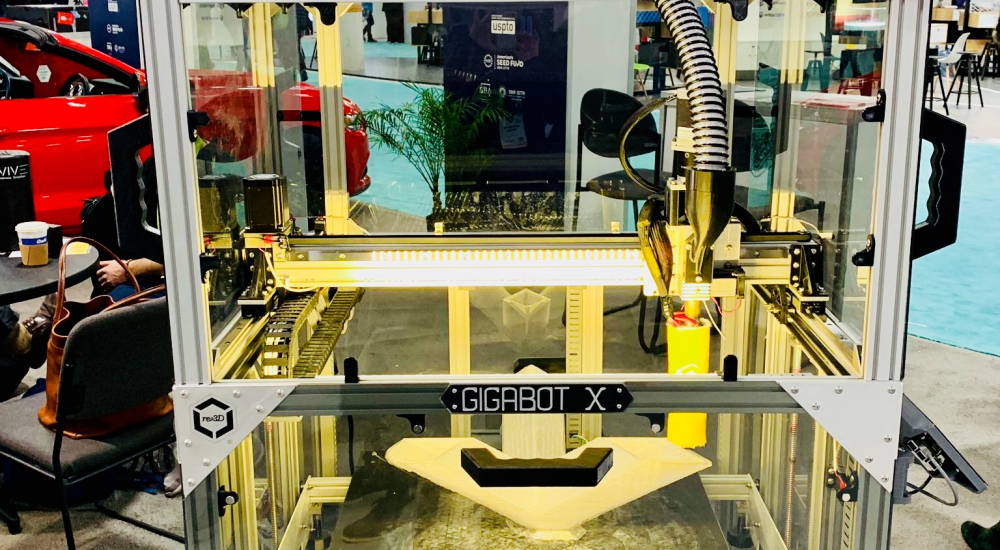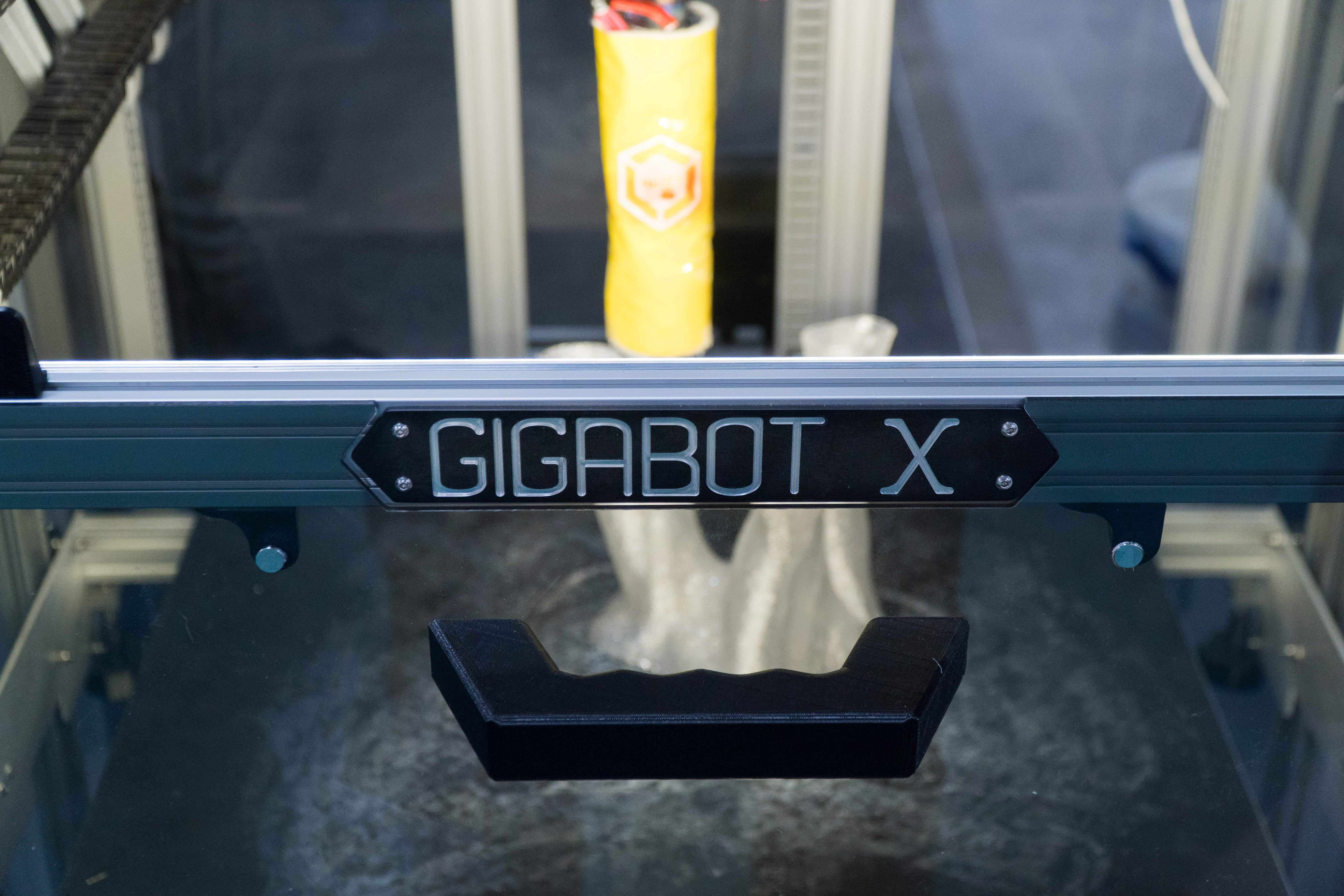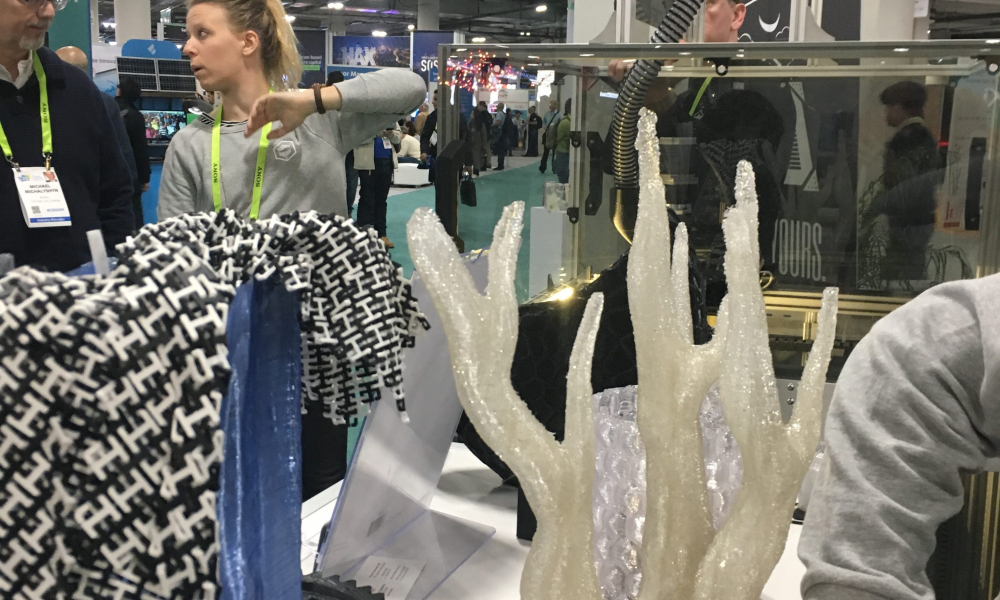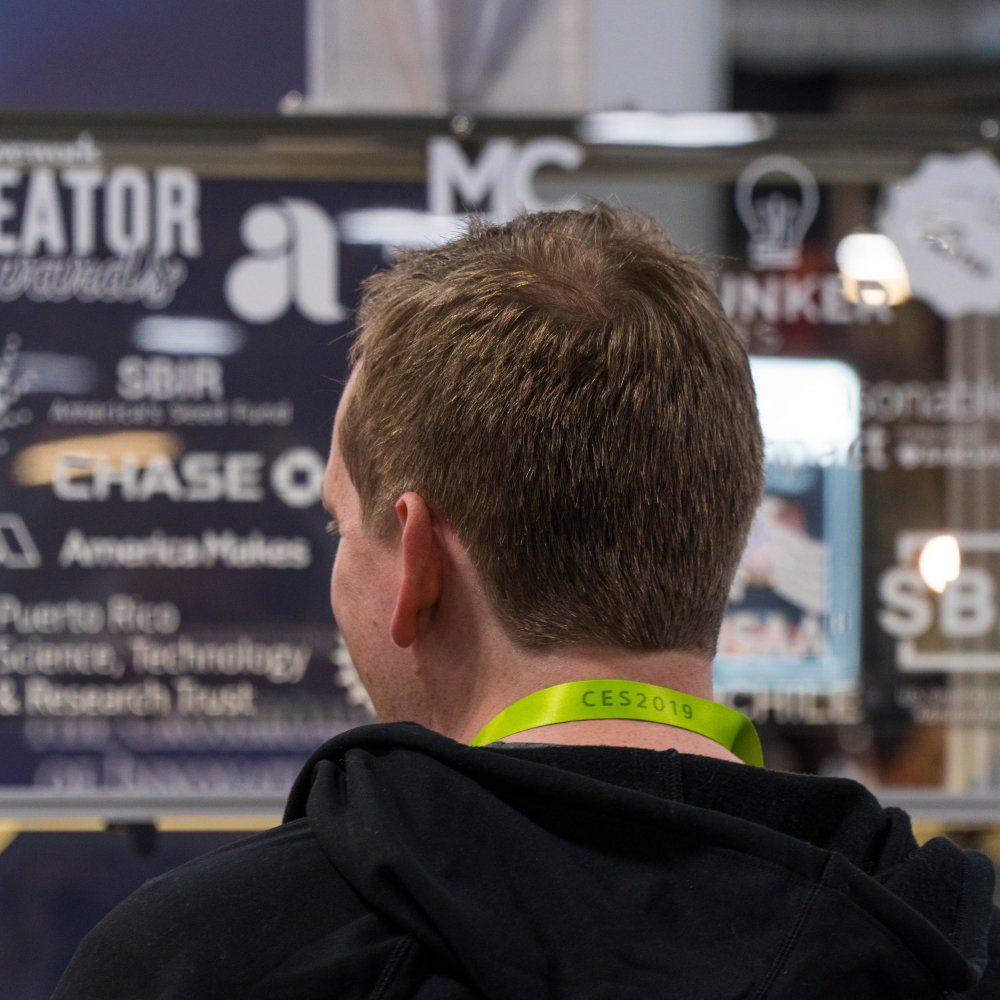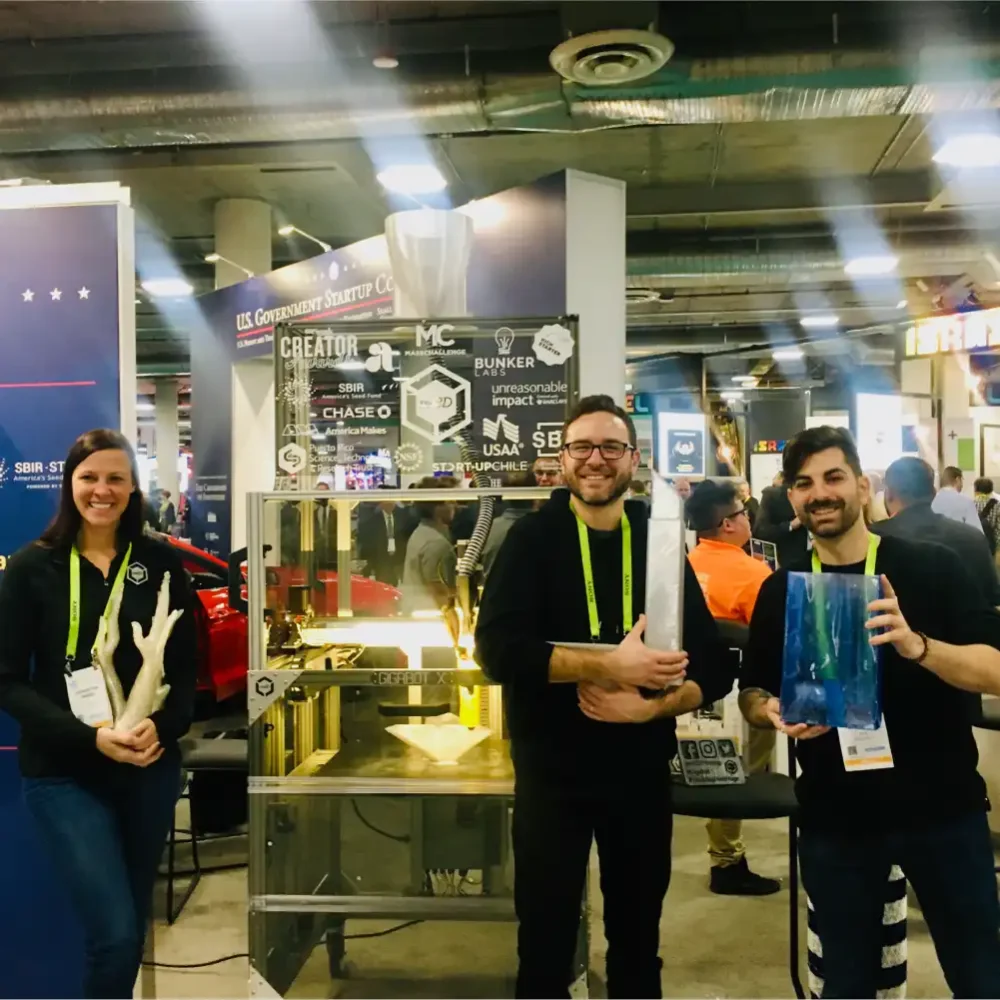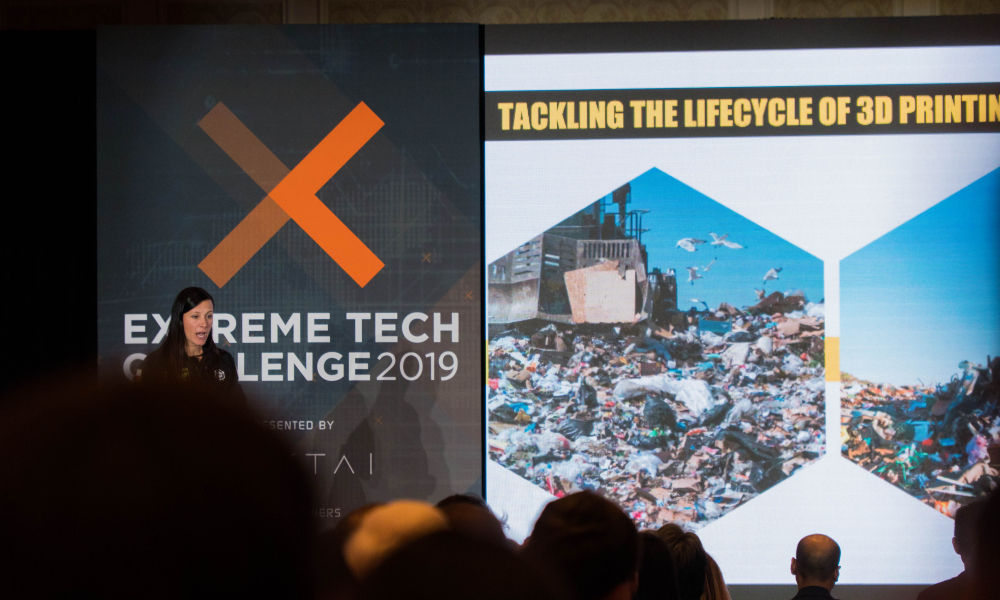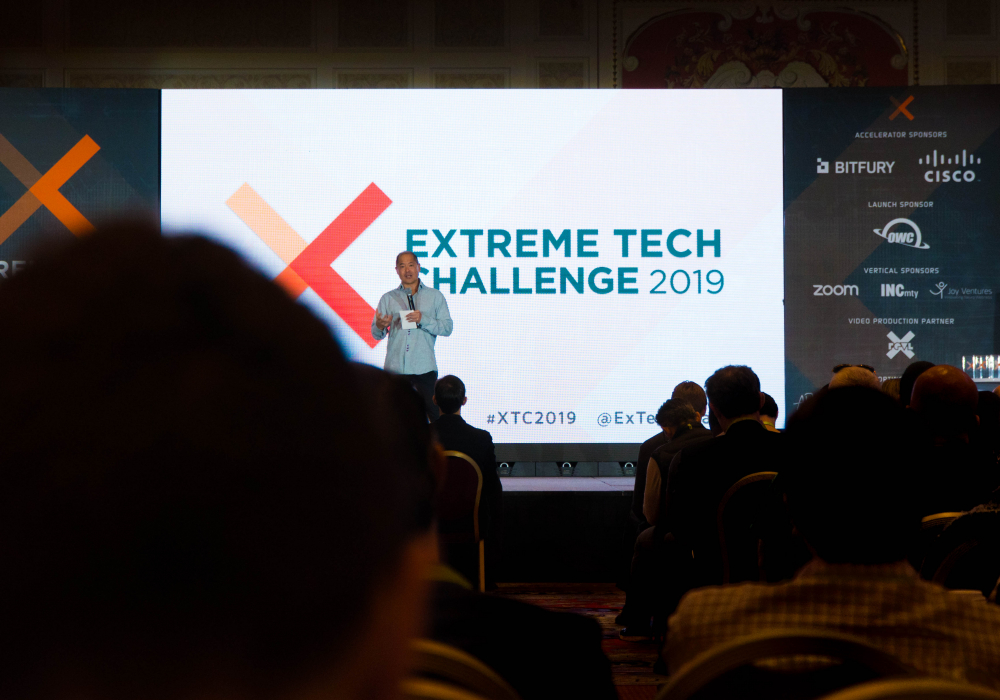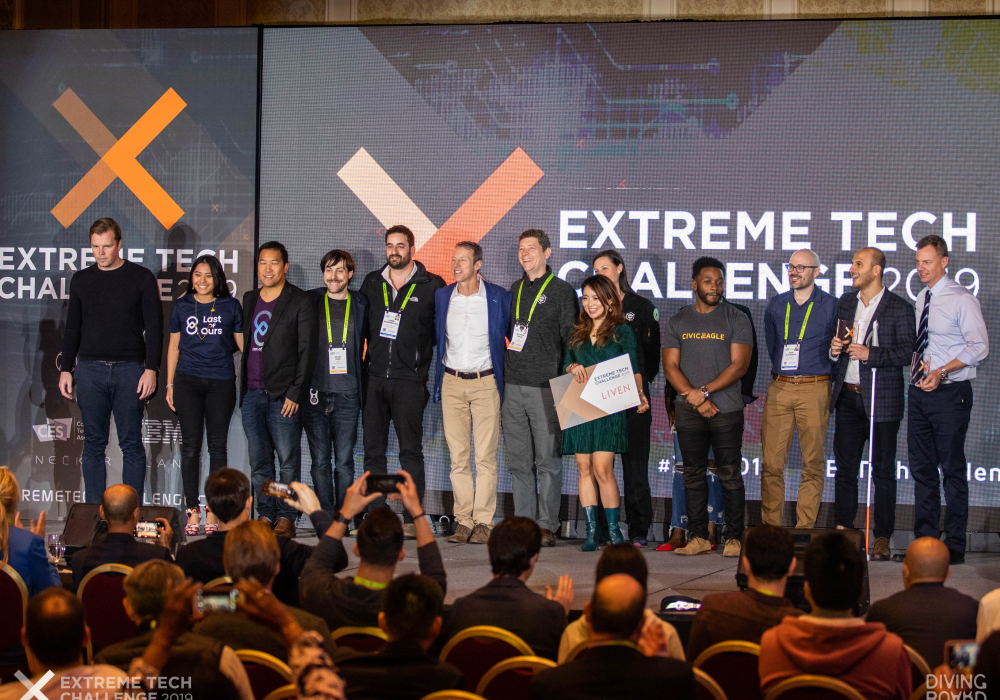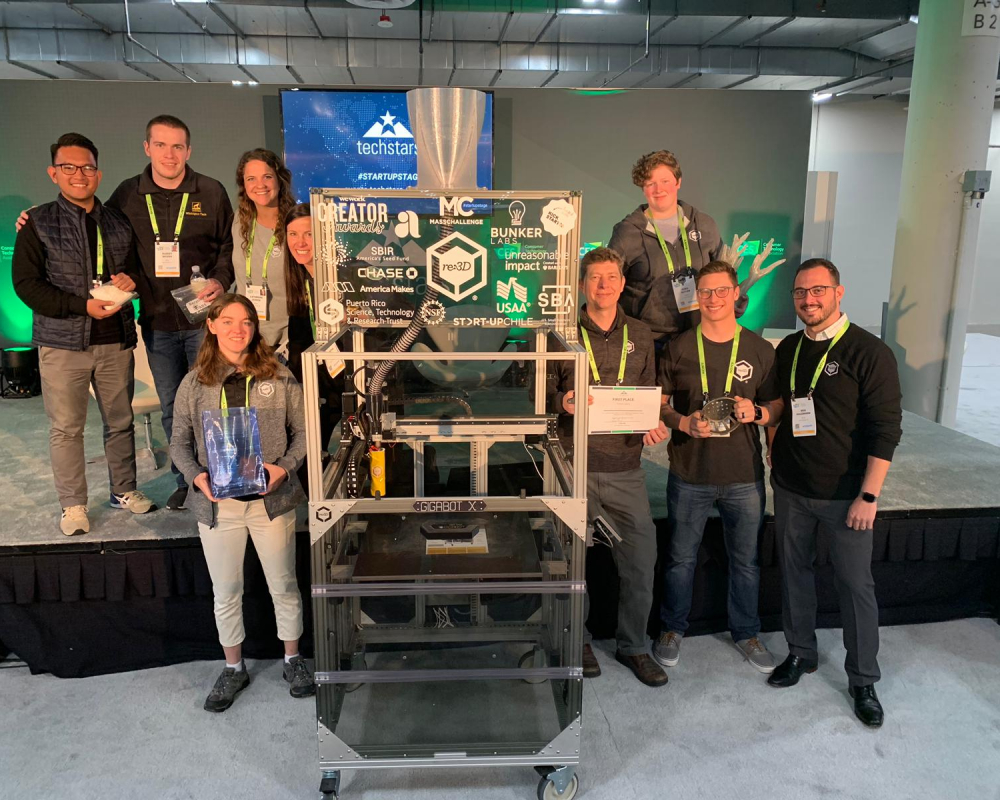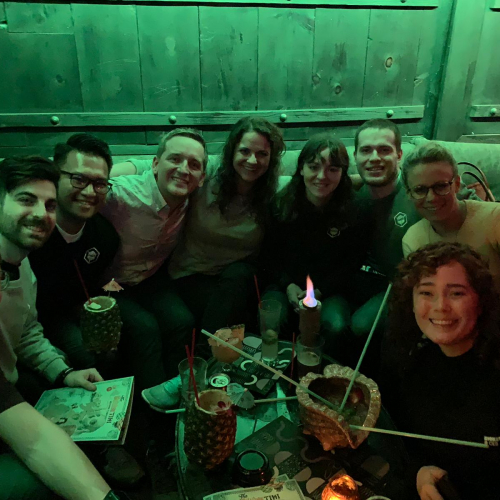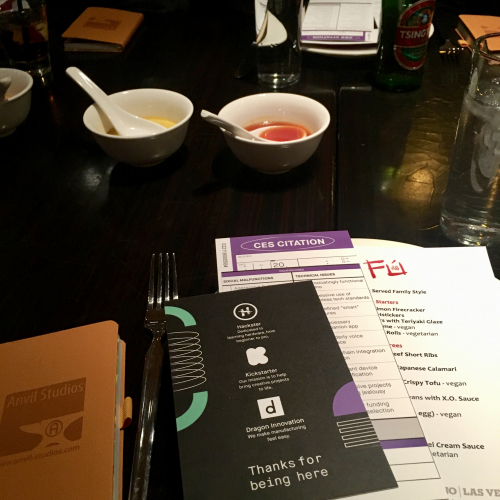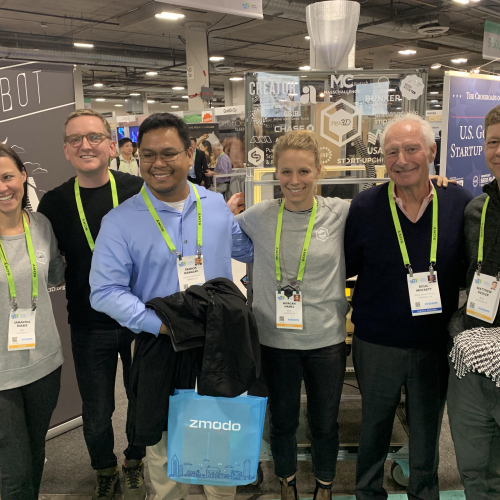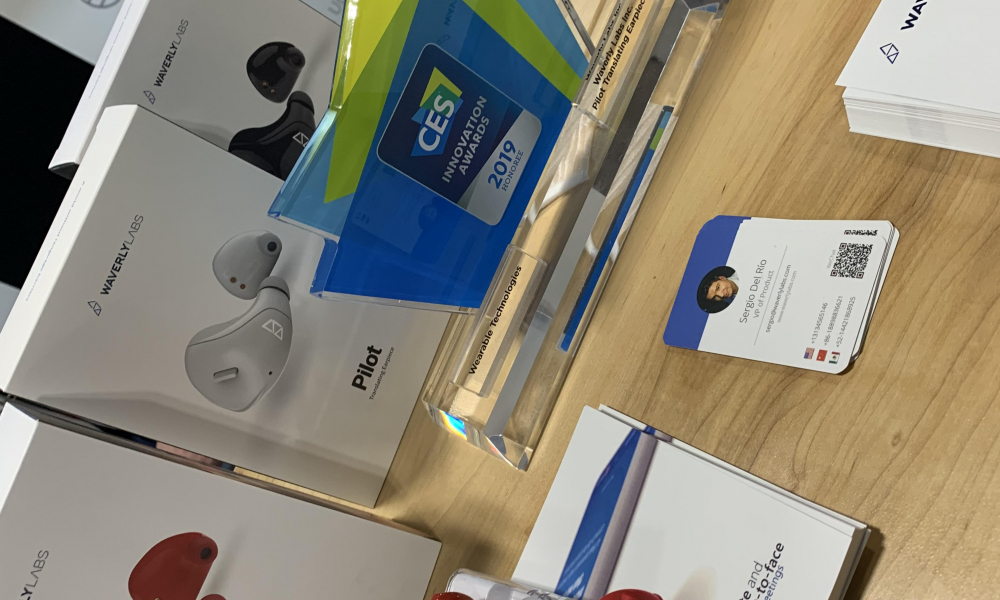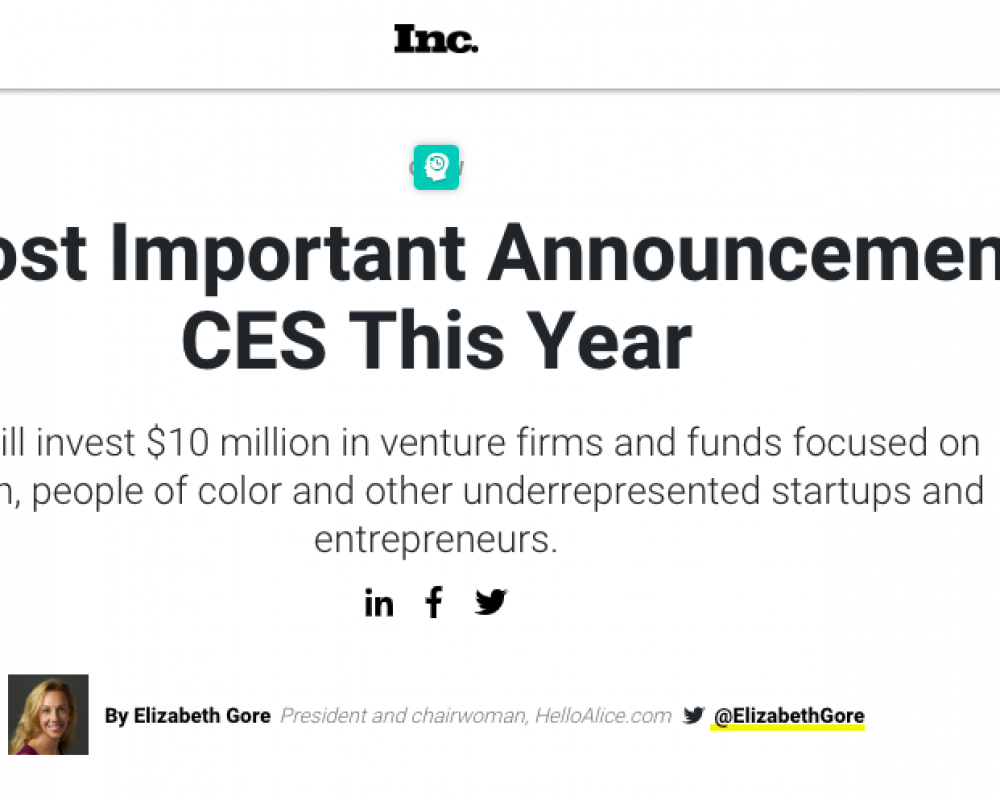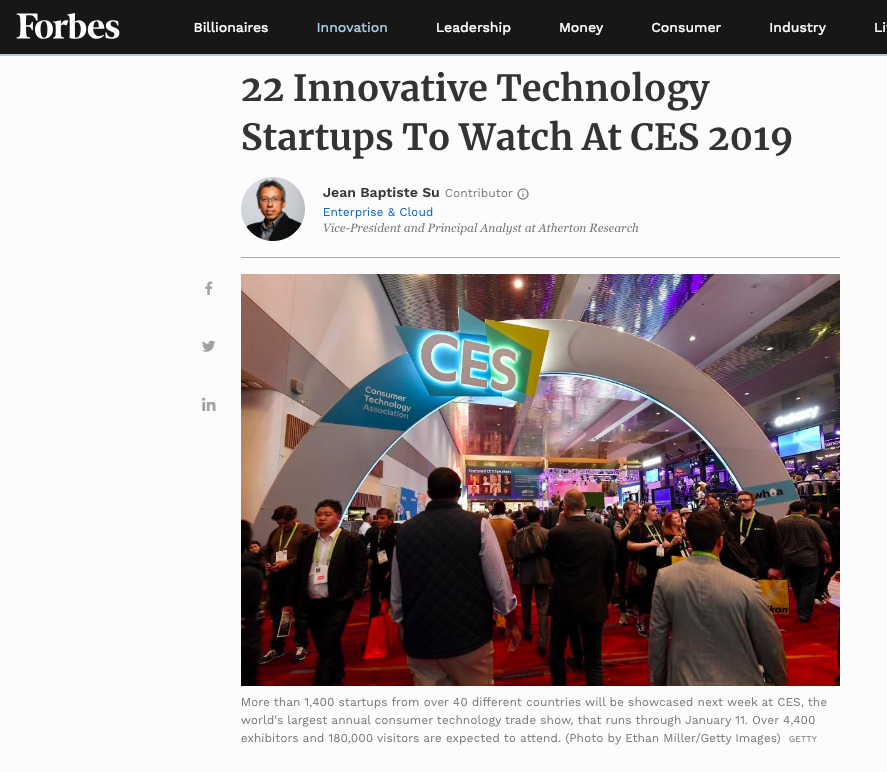As we all face our new normal and adjust to the realities of life during a pandemic, our 3D printing friends and colleagues around the world have stepped up to provide much needed personal protective equipment, filling the supply gap for everyone on the front lines. This isn’t just for doctors and nurses, it’s also for the police, EMTs, grocers, gas station attendants, and every other essential worker who suit up to keep our societies’ services going during this crisis.
More close to home, we couldn’t be more honored to count many of these selfless volunteers as our customers. re:3D’s social mission to democratize manufacturing and 3D print with purpose tends to attract like minded individuals and businesses whose first instincts are to be the problem solvers for their communities. Featured below are our friends’ efforts in their own words.
- Engine-4, Tredé, Parallel18 & Daniel Varela | Bayamón, Puerto Rico
- Bill Albertini | New York City, New York, USA
- Efes Bronze | Serdar Erol | Yalova City, Turkey
- Metabolic Foundation | Christie Mettes & Tony Sevold | Aruba
- Plodes® Studio | John Paul Plauché & Roya Plauché | Baytown, TX, USA
- CM Welding & Machine | Corey Mays | Midland, TX, USA
- Pamton 3D | Pamela Szmara | Youngstown, OH, USA
- The Kinkaid School | Jeff Diedrich | Houston, TX, USA
- Qrint Studio | Qumar Mirza | Toronto, Canada
- Doug Mockett & Co | Paul de Leon | Manhattan Beach, CA, USA
- Compendium Federal Technology LLC | Stuart Langford | Lexington Park, MD, USA
Engine-4, Tredé, Parallel18 & Daniel Varela
Bayamón, Puerto Rico
Tell us about the design you are printing.
After learning about a need for PPE, we started printing a derivative of the 3DVerkstan visor design for face shields that could accept pre-cut shields that had been donated. We chose that design because it was the fastest to print. It was nice to see along the way that it got NIH endorsement. Our expanding print farm of Gigabots & Prusa printers is located at Engine-4, and includes local Gigabots that Parallel 18, Daniel Varela, and Atlantic University (once it clears customs!) loaned to help bolster production.
Design Inspiration: https://3dverkstan.se/protective-visor/
PR Variant: Link to .stl file direct download
What material are you printing with?
We are currently printing with PLA.
Who are you printing this design for?
We are donating face shields to health professionals across PR. So far we have donated 1400. We’re also helping a doctor with 3D printed splitters. Just today we got a tightly fitted design and are doing further testing.
This fabulous group of makers who combined forces can be found online:
Bill Albertini
New York City, New York, USA
Tell us about the design you are printing.
When I heard about a potential shortfall in PPE supplies at New York area hospitals, my first reaction was to research mask/respirator models but soon realized they were not an ideal candidate for FDM printing. Face shields are also in short supply and there were a couple of designs that looked promising. I downloaded and tested several candidates before I found a design on March 26th by Swedish 3DVerkstan which they had just released in the wild, I soon I discovered that Weill Cornell and several other institutions had adopted this model because of its simplicity and ease of assembly. It consists of two components, a 3D printed head strap and a clear plastic shield which can be easily fabricated using letter size acetate sheet .005 or thicker and a standard 3 hole punch.
Download Site: https://www.youmagine.com/designs/modified-protective-visor-by-3dverkstan
Design Site:https://3dverkstan.se/protective-visor/
What material are you printing with?
I am currently printing with PLA but I am going to switch over to PETG as soon as I can set up better ventilation. This is an old fashioned New York loft work/live situation.
Who are you printing this design for?
Most of this first batch was donated to DIY Shield Project through connections with nycmakesppe.com, and they have been pretty much distributing to (public) hospitals with severe shortages like Elmhurst and Lincoln. I am also giving 50 kits directly to someone I know at Montefiore Hospital in the Bronx. I have also been in contact with Jenny Sabin who is running a site for Weill Cornell https://www.sabinlab.com/operation-ppe
Bill Albertini can be found online:
Efes Bronze | Serdar Erol
Yalova City, Turkey
Tell us about the design you are printing.
It is a simple face shield design that can save lives. The design came from 3BOYUTLUDESTEK.ORG platform. There are thousands of volunteers in this platform with 3D printers. “Sizi seviyoruz” is located on the shield and means that we love and thank you to all struggling with COVID-19.
What material are you printing with?
PLA
Who are you printing this design for?
All sanitarians, policemen, and some other officials that have to contact each other everyday.
Where can people sign up to assist with this effort?
Efes Bronze can be found online:
Metabolic Foundation | Christie Mettes & Tony Sevold
Aruba
Tell us about the design you are printing.
We started working with the design from Prusa, which looked like it was carefully researched and tested and approved and it worked well, so we printed about 400 of those in total. We’ve recently moved on to the 3DVerkstan design, which takes half the time to print so it helps us increase our production. In addition to these, we’ve also designed a copy of some safety glasses they use at the hospital, which print even quicker and use less material.
What material are you printing with?
We’re printing mainly with PLA because that’s what we have, and it’s easy to work with. We’ve also used a bit of PETG and some ABS because that’s what we had, and it should work fine according to the Prusa and 3DVerkstan websites.
Who are you printing this design for?
We’re printing for the two main hospitals on the island, Horacio Oduber Hospital, and ImSan (Instituto Medico San Nicolas), as well as the department of health who are doing the testing (DVG, Directie Volksgezondheid), the psychiatric hospital organization (Respaldo), the union of family doctors and dentists, as well as individual health workers including nurses and family doctors who ask us specifically.
Where can people sign up to assist with this effort?
If you’re in Aruba, and have a 3D printer or can sew, you should sign up. Best way is to email us at lab@brenchies.com, or WhatsApp us at +297 630 2475
Metabolic Foundation can be found online:
Plodes® Studio | John Paul Plauché & Roya Plauché
Baytown, TX, USA
Tell us about the design you are printing.
We are printing a head banding component of a protective face shield. It is based on a design by Prusa, and had been approved by the Czech Ministry of Health for use to help fill the void of PPE (Personal Protective Equipment). The version we are printing is a redesign by TXRX Labs and part of a volunteer effort that they had organized to help with our own local need for PPE during this worldwide COVID-19 pandemic. We are excited to see local additive manufacturing step up to a shared worldwide call, where intellectual property and design ego take a back seat to provide real time evolving, useful, and needed objects for humanity.
What material are you printing with?
We are printing with PLA from re:3D, always our first choice for on hand reliable material. We are printing 24×7 on our original (but upgraded a little) Gigabot #21! Each part is around 1hr and we are doing at least 6 units at a time.
Who are you printing this design for?
These prints are for our Houston area doctors, nurses, and staff on the front lines of the COVD-19 pandemic in hospitals and stations that are in need of PPE or anticipate a need in the coming days/weeks. Our parts are delivered to TXRX labs in Houston and are assembled with laser cut shields and elastic bands to complete the product and are distributed from there.
Where are you located?
We are located in Baytown, TX in our home office. My wife (Roya Plauché) and I (John Plauché) make up plodes® studio. We are a Texas based multidisciplinary design firm that draws from a coalescence of art, product, and architectural design. Our products are varied, authentic, minimal, and distilled with rigorous process to a balanced purity. Currently our best sellers are fire pits, so check them out and make a backyard escape for yourself while we are in this ‘Great Stay’. Help flatten the curve and please stay home as much as possible!
Where can people sign up to assist with this effort?
We could use local area volunteers to pickup parts from us and drop to TxRX labs when we get 50-100 units at a time. Please email info@plodes.com with subject “TXRX pickup”. And please everyone visit TXRx’s go fund me at https://www.gofundme.com/f/txrx-manufactures-protective-medical-equipment and give what you can!
plodes® studio can be found online:
CM Welding & Machine | Corey Mays
Midland, TX, USA
Tell us about the design you are printing.
We were printing a prototype ventilator splitter designed by Texas Tech and UT Permian Basin to allow up to 4 patients to use one ventilator. The first run has been sent for testing and we are waiting to hear back on that part. In the meantime we started reaching out to local medical personnel and some of the rural areas to see what needs they might have. We found the biggest need was for face shields. We chose a simple open source design and have been printing these 24/7 to fill these needs.
What material are you printing with?
For the ventilator splitter I chose PETG material and we are printing the face shield headgear out of PLA.
Who are you printing this design for?
Any medical personnel in need of face shields.
Where can people sign up to assist with this effort?
I encourage anyone with a 3D printer to contact your local medical personnel or local universities of schools to help fill immediate needs there. Also, go to www.matterhackers.com and sign up for the COVID-19 response team. They will send out requests and files.
What has it been like for you working on this project?
It’s been exciting to be able to work on this project. As a manufacturer and mechanical designer I’m a problem solver by nature so being able to have the capability to help has been really fun and exciting! The Gigabot has been absolutely rock solid through this project. The larger print bed allows us more freedom to run different part arrangements so that we do not have to have someone here 24/7 to watch the machine. With the face shield head gear, we start a run of 6 in the morning and that run is ready to be pulled off by 5 pm. We then start a run of 8 that is ready when we come back in the following morning. I don’t think it has been off in almost 2 weeks and still going strong!
CM Welding & Machine can be found online:
Pamton 3D | Pamela Szmara
Youngstown, OH, USA
Tell us about the design you are printing.
The headband design is PRUSA stl file. It is an existing design.
What material are you printing with?
We are using PETG from Village Plastics in Barberton, Ohio.
Who are you printing this design for?
We have supplied masks to Hospice of NY, the Ravenna Fire Dept in Ohio, and doctors at the Cleveland Clinic.
Pamton 3D can be found online:
The Kinkaid School | Jeff Diedrich
Houston, TX, USA
Tell us about the design you are printing.
The design is from TX/RX, a non-profit makerspace here in Houston. My first prints were based on a single design where I could fit 9 on the bed. Then Patrick Ferrell @PBFerrell told me about a stacked design with 9 high which meant I could do 81 at a time. This was a 110 hour print.
What material are you printing with?
PLA
Who are you printing this design for?
These are being printed for TX/RX
What has working on this project been like for you?
I am fortunate to work at a school with a Gigabot, and our head of school, Dr. Ed Trusty, was more than happy to allow me to use the school’s equipment and material to give back to the community.
Jeff Diedrich can be found online:
Qrint Studio | Qumar Mirza
Toronto, Canada
Tell us about the design you are printing.
The designs we printed are our own design for non-medical grade face shields for local business and restaurants. Due to this reason, we made it so it could have a minimal cost.
What material are you printing with?
We printed with PETG.
Who are you printing this design for?
A local community non-profit.
What has working on this project been like for you?
We started just to help the community, but we end up applying for a health certificate so we could produce medical grade face shields.
Qrint Studio can be found online:
Doug Mockett & Co | Paul de Leon
Manhattan Beach, CA, USA
Tell us about the design you are printing.
We started printing designs a friend of mine sent to me – all from Thingiverse. After printing for a few days, I realized our two Gigabots weren’t going to be able to catch up with the demand, so Carlos and I played with the settings and got the print time down to 28 mins per visor for open visors, 35 mins for closed top visors (some hospitals preferred closed visors) which still wasn’t enough. I saw a post by a company from another country which did in house casting. That was clever so I thought we should do the same. I contacted our local silicon and plastic supplier for molding instructions and to buy materials to make silicon molds. I designed a closed visor that could work with molding and casting. I printed a few versions using our Gigabot 3+ and used that print to create a silicon mold.
We are also printing ear savers (mask extenders). These seem to be quite popular.
What material are you printing with?
PLA
Who are you printing this design for?
Local hospitals and nursing homes:
- Torrance Memorial Hospital, CEDARS SINAI & Providence Little Company of Mary (earsavers), Long Beach Memorial Rehab, and other local clinics.
- Delano Hospital, VA Palo Alto and other smaller clinics in other states
What has working on this project been like for you?
It has been a privilege and an amazing team experience to be able to create something to help in this time of need. It means a lot to our team to be a part of this project and donate to healthcare providers.
Doug Mockett & Co can be found online:
https://www.facebook.com/dougmockett/
https://www.youtube.com/user/dougmockett
Compendium Federal Technology LLC | Stuart Langford
Lexington Park, MD, USA
Tell us about the design you are printing.
Originally, we were going to make frames and donate them to Makers Unite in Baltimore, MD. At the time, they were asking us to use the Prusa v.RC2 face shield design. In the meantime our CEO was communicating with local first responders, and Medstar Saint Mary’s communicated that they were running low on face shields. We used the Prusa v.RC2 face shield, but we made some minor changes so they would print faster. The straps are our design. We tried several designs including the strapless, but we received the best feedback from the modified Prusa v.RC2.
What material are you printing with?
PLA for the frame. NinjaFlex TPU 85 for the straps. The clear screens are made from clear acetate or PVC sheets.
Who are you printing this design for?
Medstar Saint Mary’s Hospital, Charlotte Hall VA Clinic, several nursing homes and private practices.
What has working on this project been like for you?
It has been busy, but rewarding. I wasn’t the only person contributing. My CEO John OConnell did the leg work, and my coworker Cedrick La Marca assisted with the CAD designs and resin printing. In addition to the face shields, we also printed spare ventilator parts for Saint Mary’s Hospital. Everything was donated free of charge.
Our story was featured on WJLA-TV Washington DC ABC affiliate.
Compendium Federal Technology LLC can be found online:
Are you a re:3D Gigabot customer working on COVID-19 efforts? We’d be happy to add your work to this blog. Email us: info@re3d.org
Charlotte craff
Blog Post Author
